Earlier this week Oura announced their new Oura Ring 3, both an upgrade in hardware as well as a shift in business models. For those not familiar, the Oura Ring aims to track your daily activity, as well as nightly sleep. And then based on that, will give you a readiness score each day. It does this using small sensors on the inside of the ring band, inclusive of heart rate tracking.
The new Gen 3 version adds in SpO2 sensing, period prediction, workout tracking, and daytime heart rate tracking, using both new sensors as well as new software features.
However, the V3 version also changes Oura’s business model a bit. Previously you’d buy the ring and get the software platform for free. Now, however, you have to both buy the ring as well as pay $6/month for their subscription service. Existing Oura Gen 2 owners don’t need to subscribe to see their existing stats/features, but they won’t get any new features going forward – those will be reserved for Gen 3 ring owners and more specifically, subscribers. We’ll talk more about that later.
Now, I’ll preface this isn’t a review. As regular readers know, reviews have the word ‘review’ in the title, and more specifically also tend to have longer periods of data collection – especially for a device like this that really needs more data for trending. Plus, Oura has an embargo on things titled ‘review’ until Nov 15th. Though, there are no limitations/embargos on what I can discuss (I’d never agree to that). Point being, circle back sometime down the road. This is a media loaner from Oura, but it’ll go back to them down the road. As usual, I don’t take any money/etc from any companies I review – just the way I roll.
With that, let’s dive into it.
What’s New:
The new Gen 3 unit changes physically to include new sensors, as well as additional platform changes that are more software-focused features. Together, both require a subscription now for Gen 3 devices. Starting with the hardware side, there’s the following changes:
– Adding of SpO2 (Blood Oxygen) tracking (coming in 2022)
– Added daytime/semi-real-time heart rate tracking
– Adding workout heart rate tracking (coming later 2021)
– Significant increase in LEDs: From just infrared LED to green, red & infrared LEDs. Green for workout, red for SpO2, infrared for night tracking
– Changed temperature sensor system for higher accuracy
– Increased internal memory from 0.5MB to 16MB
– Ring size stays the same as Gen 2, but is 67% smaller than Gen 1
– Battery life claims at 7 days
– Water-resistance claim at 100m, including saunas and ice baths
Meanwhile, on the software/platform side, you’ve got:
– Adding some 50 videos “science-backed videos” on understanding all this data (coming later 2021)
– Added period prediction
– “Improved” sleep stages algorithm (coming in 2022)
Now as you can see, this is clearly a case of Oura launching a product now with the sensors it needs to add the promised features later. This seems to be the pattern du jour lately, with Fitbit doing the same thing on products both this year and last year. An example here being the SpO2 tracking – whereby those Red LED’s are in the ring today, but won’t be enabled till 2022, where they’ll start providing blood oxygen tracking.
The Ring:
The first thing to know about the new ring is that the sizing has changed slightly for it, and thus, there’s a new sizing kit. That’s because, unlike a watch or wristband that’s adjustable, the ring needs to be very specifically sized to your finger. The sizing kit is simply a collection of dummy rings without any tech in them. Just plastic molds:
In my case, I went with a size 10. I think in all actuality I’m probably halfway in between this size and the next smallest size, but the next smallest size was simply far too tight. Meanwhile, this size is good, and won’t easily slide off my finger. But I could see perhaps being about 1mm smaller for slightly better fit, accuracy-wise. But ultimately, that’s the trickiness to this specific form factor, sorta like some of the shoe insole-based running technologies that are specific to a certain shoe size.
In any case, here’s the ring, and the box it came in:
Inside the box there’s a small charging platform. You simply drop it on there, and it charges. It only aligns in one direction.
The company says it charges to full in “20 to 80 minutes”. I haven’t done a full re-charge yet, because I was too impatient. Instead, I got it up to around 65% or so, and stuck it on my finger. I’m now about 72 hours later, and it’s down to 16%. So that puts it on track for about 6ish days, roughly in line with their estimates of 7 days. In my case that’s inclusive of two workouts as well as a boatload (many hours) of pool/water time, which may or may not impact battery life.
I’ll likely charge the ring here shortly during some more desk time later today.
Here’s some shots of the ring itself, non-action style:
In terms of wearing it, there’s a flat part on the ring, that goes towards the sky, and thus, the three sensor bumps go on your ‘palm’ side.
From a wearability standpoint, I’ve been pleasantly surprised. I’ve long resisted testing an Oura ring because frankly, I’m not a big ring person in general. I wear my (very thin) wedding ring during the day, but not usually during workouts (mainly because I’m afraid it’ll somehow fall off). But, transitioning to this ring hasn’t really been any adjustment. Though, my wife and Dad actually noticed immediately.
There’s a bunch of different colors/styles, but in my case I just kept it simple – and actually purposefully choose a ring color opposite my wedding ring, just for keeping it obvious which one I had on. The specific model shown in this post that I’m wearing is the ‘Heritage Stealth’.
Otherwise, there’s nothing to interact with on the ring itself. There’s no display, vibrations, sounds, etc… from it. It just sits there and quietly does its thing, transmitting the data back to your phone via Bluetooth Smart.
The Platform:
So with that, let’s dive into the platform a bit – including what’s new. First up we’ve got the main dashboard showing your day. You can see here it says I’ve burned 905 calories of my (default) 650 calorie goal, which I did via a ~40 min run this morning. You’ll see both my activity score and inactive time. Most of the rest of the morning I’ve spent at my computer.
Looking above still, you’ll see my heart rate plot for the day. It shows a plot since midnight, and that spike there is my run. It also shows a ‘realtime’ heart rate, but it’s not super real-time. It’s only on-demand, or occasionally updating. So if I tap the heart icon, it’ll measure my heart rate and come back with a new value, which is live for about 3 seconds. Additionally, I can tap the chart and see more data from today or previous days:
Below is my workout from this morning. It automatically recognized this after I got back, and asked me to confirm it:
Following the run it seemed to trip something that newly asked me for my location information, enabling it to track my workout. My previous run two days ago didn’t trigger this. So perhaps this is parts of the system coming online for workout tracking later in the year.
You can see my workout intensity levels at the bottom, but you won’t see any specific BPM levels (yet).
According to Oura, that’s coming. Here’s some shots from their PR pack showing the manual recording:
I’d note that the above demo/PR/marketing workout appears *highly* smoothed for heart rate data. Which I suspect may be tied to the accuracy of their sensors during workouts/high intensity. For example, a few times during my run both today and two days ago, I triggered the real-time HR from the app (while running), and it showed a fairly incorrect value (80bpm, versus my actual HR as measured on three other devices at ~171bpm).
Of course, I’ve also been around this industry long enough to know that most companies will *increase* power to their optical HR sensors during an actual workout (versus 24×7 monitoring), which in turn dramatically increases accuracy. Thus since the workout mode doesn’t appear to be live yet, it’s likely that type of logic isn’t happening yet. And thus, the current values aren’t tuned to that. It’s also possible it’s trying to use the infrared LED’s here, as they note they use the green ones during the new workout mode (using the infrared to attempt to track a workout wouldn’t go over well). However, I am able to see the green LEDs in other daytime settings. In any case, I wouldn’t judge anything yet until the feature rolls out.
Anyways, back on the main dashboard page there’s your Readiness score, which aims to tell you how ‘recharged’ you are, and is based on numerous factors including your resting heart rate, body temp, sleep, previous days activity, and the intensity of those activities. As well as how balanced those metrics are relative to your baseline. You can see all this within the ‘Readiness’ tab as well:
The last set of data is the sleep metrics, from the sleep tab. These metrics are pretty normal for the most part, but do include full night HRV tracking, full night heart rate tracking, and sleep phase tracking.
In my case, it nailed the fall asleep/wake-up times correctly. Though you can edit them if need be.
Now, in my full review, I’ll detail much longer comparative stats, but here’s a few quick comparisons for you, from last night. The two watches were worn on my wrist, while the Whoop was worn on a bicep band. The ring was worn on my finger.
Recovery Scores:
Actual feeling: Pretty good actually, I’d give myself a 70-75% score.
Apple Watch Series 7: 42% (using Athlytic App)
Garmin FR745: 65% (Body Battery score at wake-up)
Oura Gen 3: 89% (Readiness Score)
Whoop V3: 53% (Recovery Score)
HRV Values (at sleep, average):
Apple Watch Series 7: 53ms (using Athlytic App with SDNN)
Garmin FR745: N/A
Oura Gen 3: 44ms (RMSSD)
Whoop V3: 44ms (RMSSD)
Respiratory Rate (at sleep, average):
Apple Watch Series 7: 14.4/min
Garmin FR745: 14/min
Oura Gen 3: 13.9/min
Whoop V3: 14.2/min
Sleep times:
Actual/reference: Roughly 11:45ish to 8:10ish
Apple Watch Series 7: 11:46PM to 8:16AM (8hr 22mins)
Garmin FR745: 12:01AM to 8:11AM (7hr 49mins)
Oura Gen 3: 11:44PM to 8:13AM (7hr 27mins)
Whoop V3: 11:44PM to 8:11AM (7hr 42mins)
For the sleep times above, I’m showing the sleep times listed for each device, as well as the ‘asleep’ time from each device (each device then decides which portions of my night were ‘awake’, including getting up and telling my kids to go back to bed at 6:15AM and such).
And yes, I’ll definitely do a Whoop 4 vs Oura Gen 3 comparison at some point after it starts shipping. They’re flying to meet with me tomorrow morning, so I’ll finally get to start digging into that data set then.
Lastly, since I’m not female, I’m unable to cover the period prediction feature. However, Oura says that they’re using the changes in body temperature to predict your period, including predicting your next period 30 days out, as well as alerting you 6 days out from the start. Here’s what it should show:


They say they do not require a consistent cycle to track this, but can track variable duration cycles.
The New Subscription:
Perhaps the biggest change here is the shift to a subscription model. Previously with Oura, there was no subscription cost – you just bought the ring, and then the platform was available. Akin to how it works on Garmin, Polar, Apple, Suunto, COROS, and others. But with the Gen 3 ring, they’ve added a required subscription cost, which makes it sorta a halfway blend of what Fitbit and Whoop are doing. Whoop requires a subscription, while Fitbit does not. Instead, Fitbit only requires it for more advanced features (including the upcoming Readiness Score, which is similar to the other platforms’ readiness scores).
The new subscription cost is $5.99/month, however, the ring purchase (which is $299) includes 6 months of free membership before you have to start paying. Though technically speaking you can skip getting a membership, but then you only see “three daily Oura Scores (Readiness, Sleep, Activity)”. This is a little bit fuzzy though, as in, do you still see the details under the scores?
Oura says Gen 2 ring folks won’t need to pay the subscription as long as they stick with their Gen 2 rings. However, once upgraded to Gen 3, then they’ll start paying.
Now, where things get fuzzy is that Oura appears to be offering a $50 discount for existing owners + the ability to buy a lifetime subscription to the platform included. But only if those folks pre-order prior to Nov 15th, 2021.
However, none of these seems well documented – nor consistent. You have to piece it together from various Reddit threads. I’ve never quite seen something as confusing as this, for something that should be super simple (even if the simplicity isn’t what existing users want to hear).
Wrap-Up:
Ok, so there ya go – a quick look at things after some 72 hours (literally, to the minute as I write this last paragraph). As noted this isn’t a full review. Mostly because I just don’t have enough data yet to back any meaningful conclusions. But also because there’s still some (most?) of the new features that aren’t even lit up yet. Though I don’t plan to wait for all those new features. As I often note – with a device for sale and shipping soon, that’s the bed that companies make for their reviews. So if they don’t have key features ready at time of shipment, that can’t be blamed on the consumer – nor does a company get a pass. Those missing features have to be balanced with the reality that not all companies hit timelines of promised features.
Still, putting that aside, I’d say the wearability factor of this impresses me more than I thought. I just don’t have to think about it. And the battery life seems to be on target for almost getting me through the week. The platform is easy enough to understand, and as I get more data into it, it’ll be interesting to see if some of the recommendations align more closely to my expectations (such as around readiness/recovery).
Ultimately, Oura is basically bridging the divide with two sets of customers for the Gen 3 ring. The first set is existing users, a chunk of which are moderately annoyed at the company (rightfully or wrongly doesn’t really matter, that’s the state). And then the second set of users is people like myself – who don’t have a previous ring and thus that’s all water under the bridge. Finding a balance between those two groups is often tricky, and has perplexed many a company for many years.
In any event, feel free to drop any questions or specific things you want me to try below – and I’ll try to dig through them.
Thanks for reading!
FOUND THIS POST USEFUL? SUPPORT THE SITE!
Hopefully, you found this post useful. The website is really a labor of love, so please consider becoming a DC RAINMAKER Supporter. This gets you an ad-free experience, and access to our (mostly) bi-monthly behind-the-scenes video series of “Shed Talkin’”.
Support DCRainMaker - Shop on Amazon
Otherwise, perhaps consider using the below link if shopping on Amazon. As an Amazon Associate, I earn from qualifying purchases. It doesn’t cost you anything extra, but your purchases help support this website a lot. It could simply be buying toilet paper, or this pizza oven we use and love.


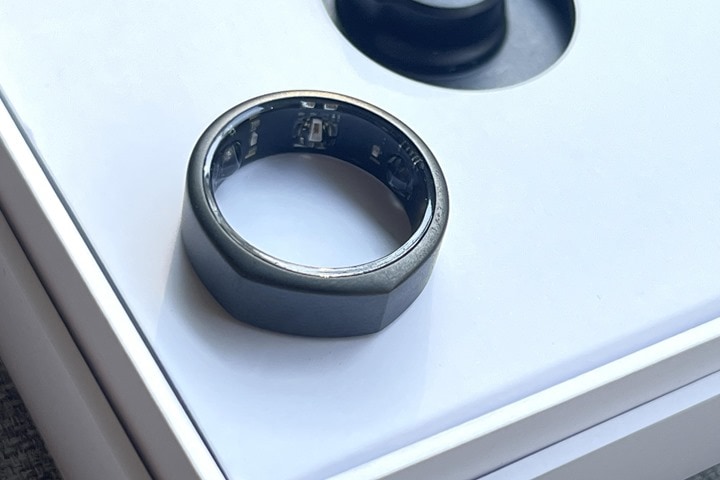

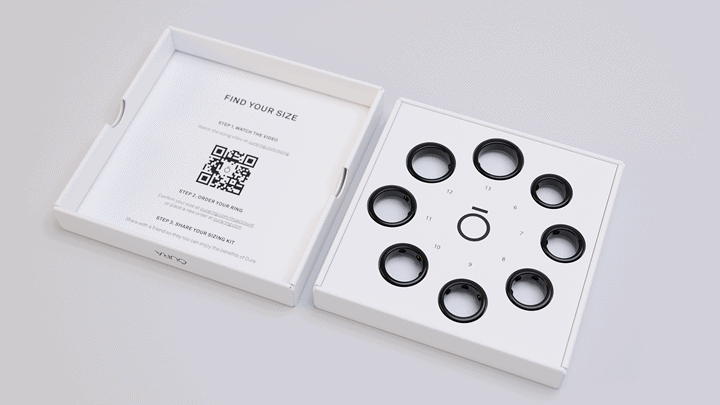
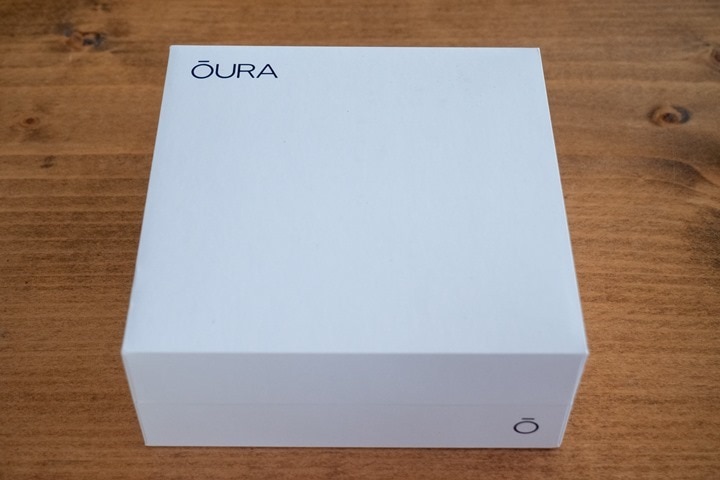
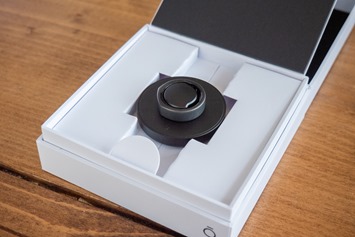
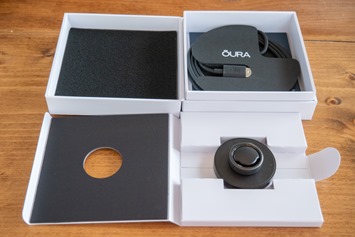
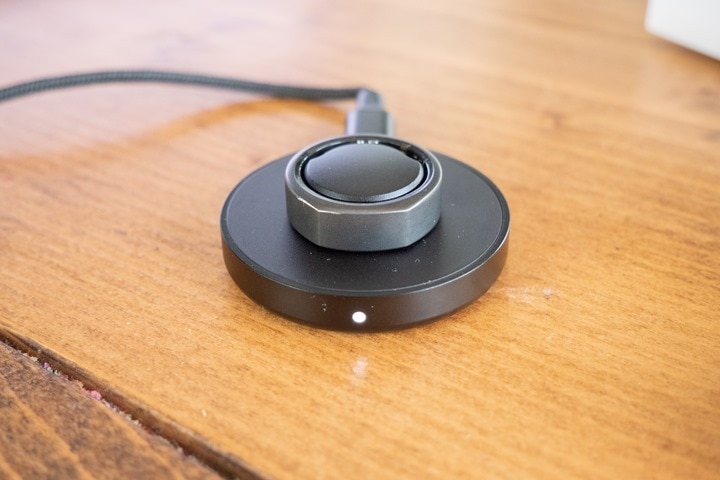

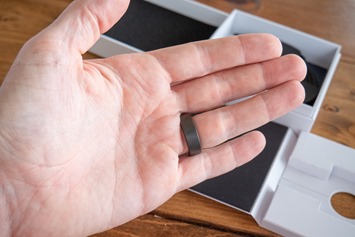
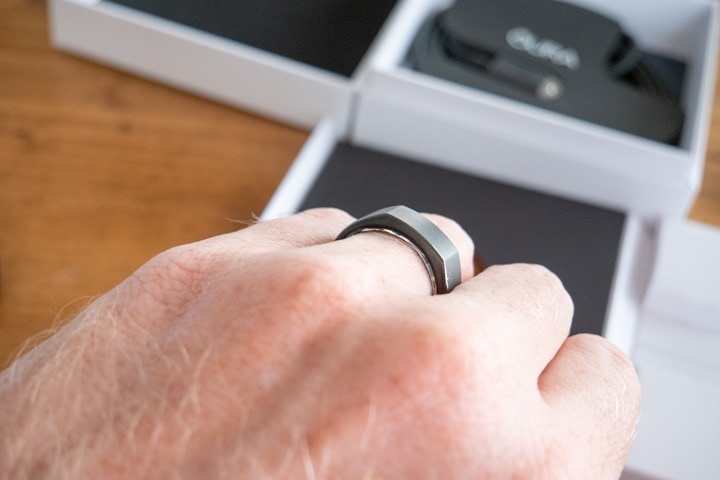
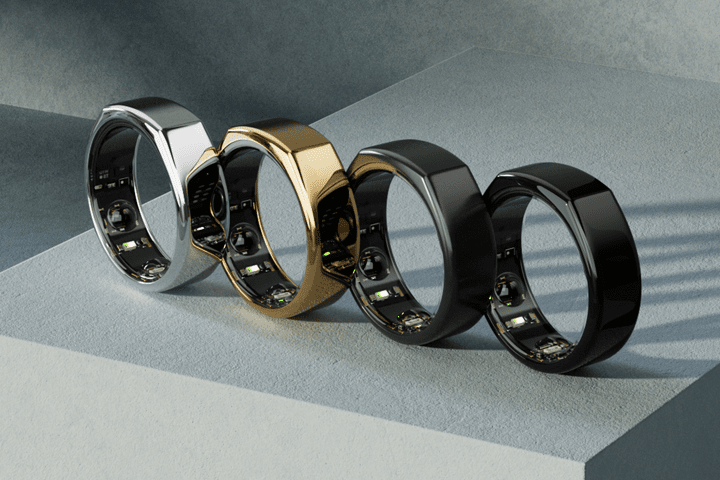
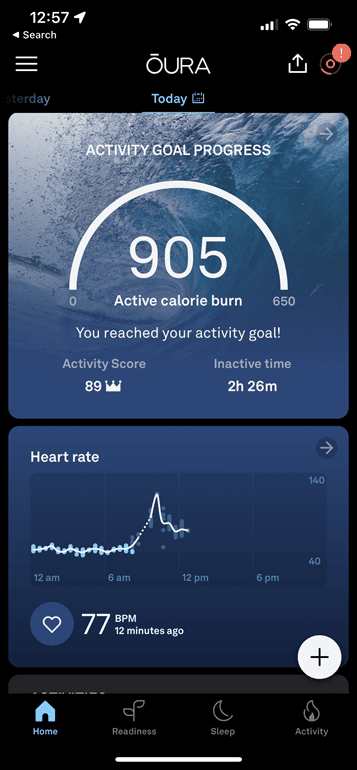

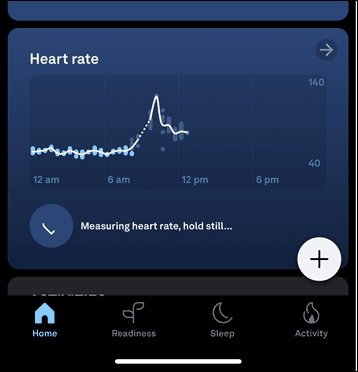
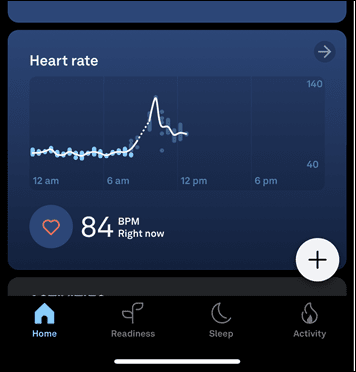
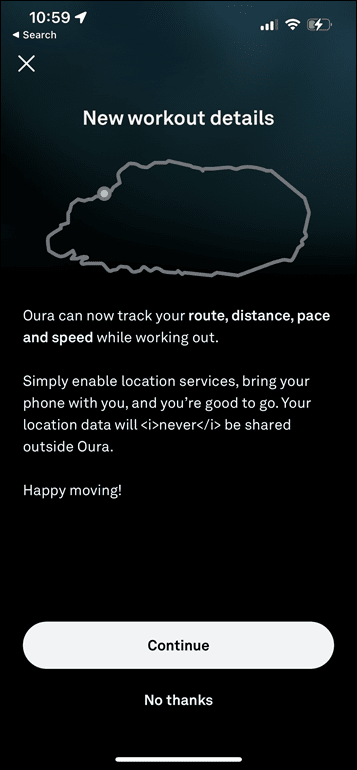
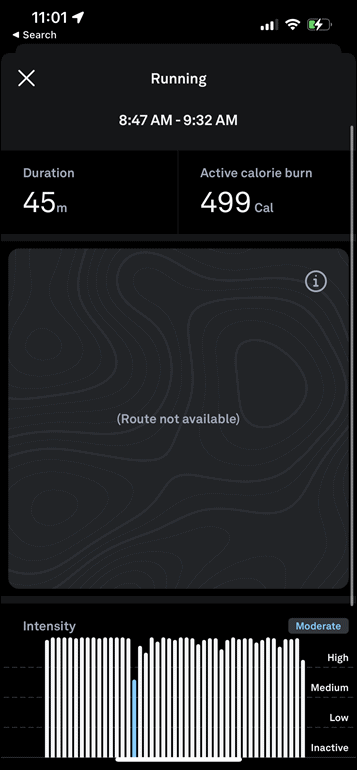
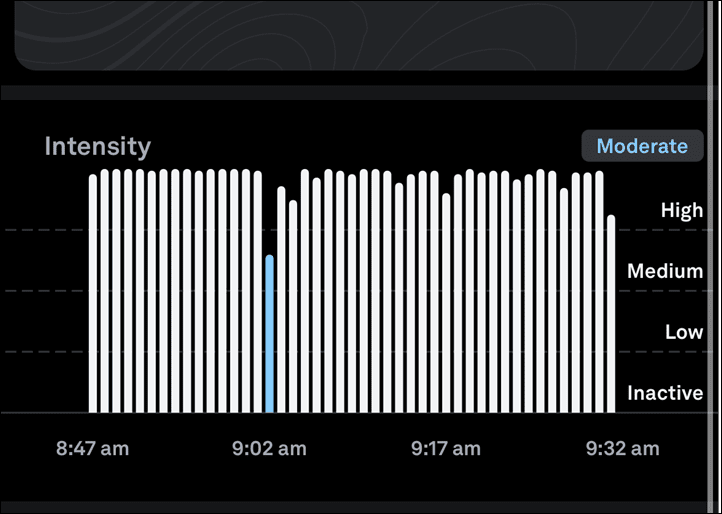
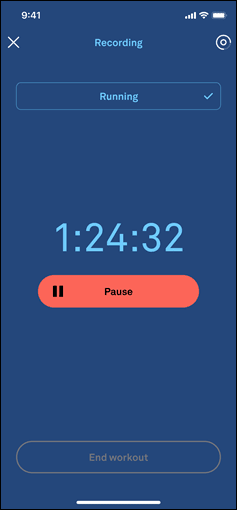
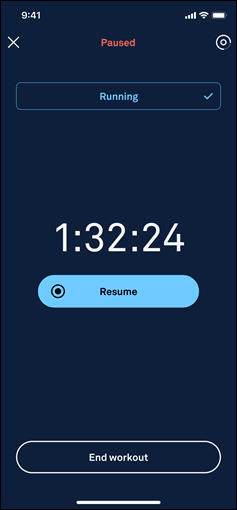
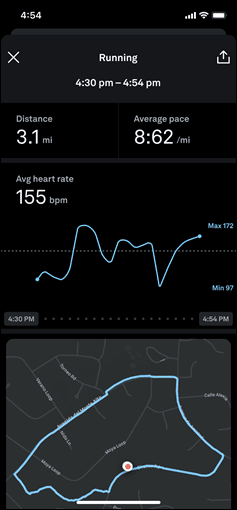
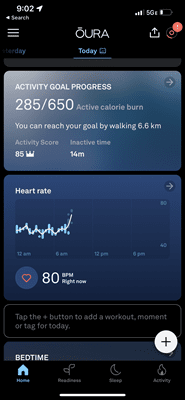
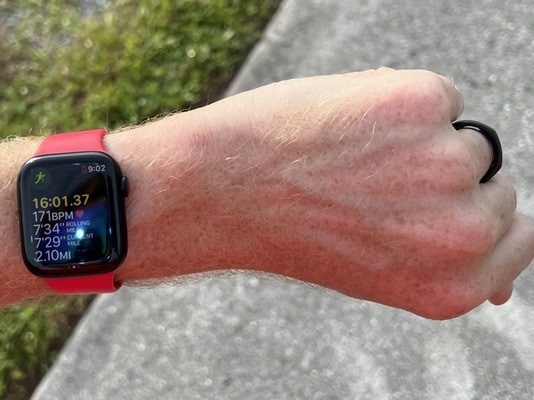
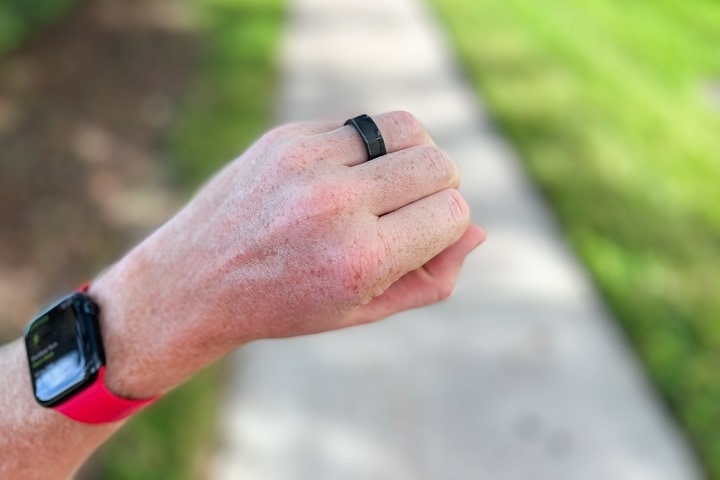

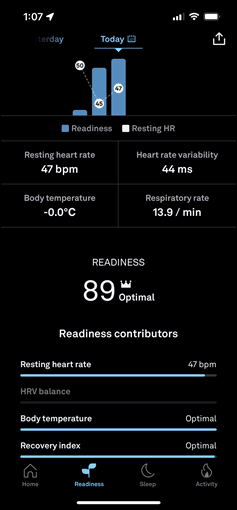
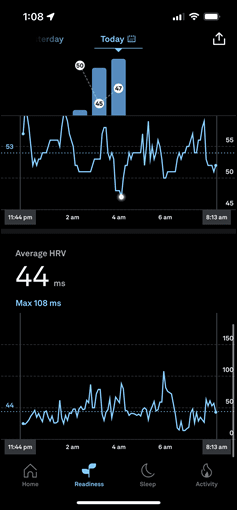
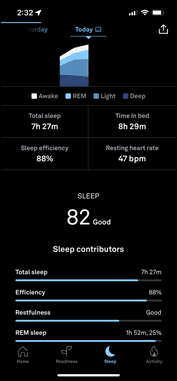
![clip_image001[6] clip_image001[6]](https://media.dcrainmaker.com/images/2021/10/clip_image0016_thumb-2.png)
![clip_image001[8] clip_image001[8]](https://media.dcrainmaker.com/images/2021/10/clip_image0018_thumb-1.png)
![clip_image001[10] clip_image001[10]](https://media.dcrainmaker.com/images/2021/10/clip_image00110_thumb-1.png)
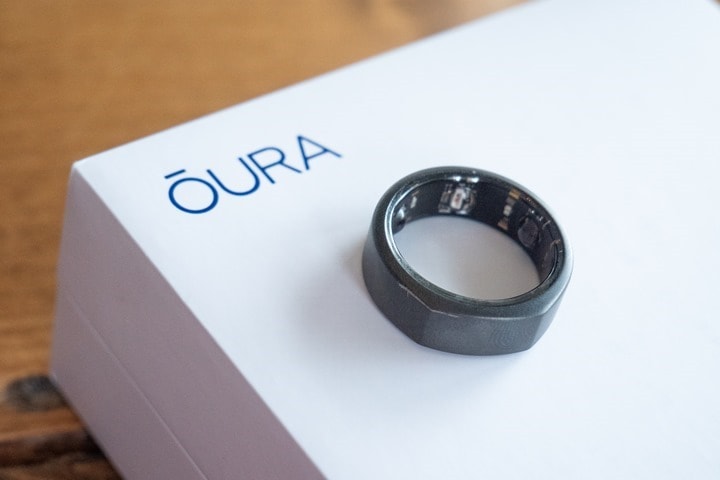




















First
I have a ring 2 and when I preordered, I got lifetime service for free (included).
PS I love my Oura Ring 2.
If you read the offer it says the lifetime membership is valued at $150, not that it cost $150.
Oura updated the terms to be more clear and also replied on this several times on Twitter/Instagram. Lifetime is for life, as long as you have an active Oura account you’ll get membership service for free, for Oura gen 3 and beyond. It’s clear that it’s forever as long as you use their products.
I love my oura Ring , I had a watch before & was not impressed .. love this technology & will never go back to a combersom watch
And as long as Oura exists….
Does that mean, having an active ours ring account -as they mention- that in order to keep the membership you will always have to have a ring and mot be and to be able to go through short or longer periods without one in order not to loose that “ active” account? I’d really like to know
One of my friends had Gen 2 and I saw it in person and wasnt really impressed. I look at it after your use and I think ‘so why would I wear this and not my Apple Watch’ and ‘so it probably won’t sync to Training Peaks’. I guess if you are in the market for a ring then it ‘could’ work. Seeing it I person it looked like an oversized, not very high quality looking ring.
The answer to this question is:
1) I wear my current Oura over an Apple Watch because I have a few nice mechanical watches I like to wear to the office and out…Oura rings let me do that and still track activity
2) Battery life if 7 days, not 18 hours…realistically, Apple Watch can’t be a decent sleep tracker with such pitiful battery life.
I have mechanical watches which I honestly use rarely now but I see your point. The battery life question doesn’t really matter to me since I can charge for a few minutes to top me off and charge when in the shower (note I have my Apple Watch for all my triathlon workouts). That being said I get that my situation isn’t everyone’s. The bigger concern for me is that ring is not that attractive and since it seems that it will not post stats to other platforms its a no go.
IMO, Oura is mainly for Sleep tracking and not for activities. To compare this to an Apple Watch is not correct. This does not replace a watch. It works hands down better than a watch for sleeping data.
I think for Gen2 that would have been a valid thought process, but with Gen3, a core new feature/selling point *IS* the activity/workout tracking. And given it’s the same price as an Apple Watch (actually, substantially more expensive than an S3 or SE), it seems like a pretty fair comparison within the confines of those data areas.
This is the reason I purchased one… and it’s good at that… I can change my sleep, but not my heart rate in a predictable way… so it’s not really useful to me for anything but sleep… my iPhone tracks my steps and I’m not aware it can do that but I’d like to know.
This would make a lot more sense to me if it didn’t mean collecting all that data in a separate siloed app. I like the idea of something like a ring / whoop band so that I could wear nicer watches and still track data, but if that data is all completely distinct from my activity and other data in Garmin it seems a bit pointless. Considering how personal the data being collected is, the wearable space is really frustratingly bad at data portability!
If you habitually do partial charges on an Oura, you will kill it. Run it down, then run it all the way back up.
Actually Oura recommends not to let the battery get below 40% and says on their website letting it go to 0% may affect the battery’s longevity.
link to support.ouraring.com
That’s bizzare, I can’t imagine the logic behind that support article.
(Though, speaking of which, one annoying thing I just noticed this morning is that Oura doesn’t give you a ‘Yo, we haven’t seen your device in a while’ notice like Whoop does. As such, when my Ring battery died overnight Saturday night, I didn’t notice it till now, since Sunday I didn’t happen to check the app for sleep. Sigh…)
You can activate a low battery notification in the settings and get an early notice.
THANKS!!! EXACTLY what I was wondering!!
So this:
——
Recovery Scores:
Actual feeling: Pretty good actually, I’d give myself a 70-75% score.
Apple Watch Series 7: 42% (using Athlytic App)
Garmin FR745: 65% (Body Battery score at wake-up)
Oura Gen 3: 89% (Readiness Score)
Whoop V3: 53% (Recovery Score)
HRV Values (at sleep, average):
Apple Watch Series 7: 53ms (using Athlytic App)
Garmin FR745: N/A
Oura Gen 3: 44ms
Whoop V3: 44ms
Respiratory Rate (at sleep, average):
Apple Watch Series 7: 14.4/min
Garmin FR745: 14/min
Oura Gen 3: 13.9/min
Whoop V3: 14.2/min
Sleep times:
Actual/reference: Roughly 11:45ish to 8:10ish
Apple Watch Series 7: 11:46PM to 8:16AM (8hr 22mins)
Garmin FR745: 12:01AM to 8:11AM (7hr 49mins)
Oura Gen 3: 11:44PM to 8:13AM (7hr 27mins)
Whoop V3: 11:44PM to 8:11AM (7hr 42mins)
——
I mean, what in the world am I to trust? It’s like having competing RNGs.
Yes it’s an interesting snapshot of data from 4 devices, what to make of it?
Going in inverse order from what you have listed…
Sleep: all of them more or less agree on the wake time, but I would say Garmin got it slightly wrong regarding the fall asleep time (or maybe not, some devices sometimes assume you are sleeping if there’s no movement and HR/Breath rate goes down, but sometimes you just happen to be very still, relaxed but still very much awake). Anyway, they do not agree on time spent sleeping (Oura vs Whoop for example, 15m sleep difference).
Respiratory rate: they all agree basically, it’s ~14 breath/min, this is derived from HRV, it’s a known formula at this point.
HRV (average during sleep): Oura and Whoop the same, Athlytic higher but maybe “prioritize sleep HRV” is off, so this could be a reading slightly after waking up.
Recovery scores: those are proprietary calculations and are dependant on comparison between current readings and baseline values with a special spice thrown in. At this point I don’t think Ray has historical values in there yet for this to be accurate, systems probably still calibrating. Also note that Garmin Body Battery it’s a different concept compared to the rest (eg. I could have 60% battery left from yesterday, get a crappy night of sleep that only recharges 20% battery but I would still have an 80% today). The battery value carries over to the next day, so it’s not directly comparable with recovery scores from other brands, that are independently calculated every day.
Fwiw: On Athlytic – “Prioritize Sleep HRV” is/was toggled as on.
Yeah, I think on sleep start/end times – these were all a wash last night. The two nights prior it was a bit more mixed, but sleep was super funky with a 1:30AM arrival at home after a flight. Sleep vs awake time of course varies dramatically.
Recovery – indeed, it’s all a bit different. And totally agree that I don’t have enough Oura data yet for it to be super valid (though, I’d inversely argue it should say that in the menu). Also agree Battery Battery isn’t a perfect comparison metric. But I’m not sure what would be. Garmin splits it out a bit more. They’ve got Body Battery, Sleep Score, and then general fitness/workout Recovery Status. One might argue for many people this is too much, but for athletes it’s more perfect.
Ray,
For the sleep “lengths” in parentheses, are those shorter than the actual interval lengths because episodes of awakening are being subtracted out?
Also – thanks for the hands-on/thoughts. Been thinking about getting one of these so it was helpful.
Yup, correct!
Cheers!
Just for your all Information here :
HRV (average during sleep): Oura and Whoop the same, Athlytic higher but maybe “prioritize sleep HRV” is off, so this could be a reading slightly after waking up.
You cant compare Athlytics metrics directly to whoops or ouras – as Apple watch uses SDNN for HRV and whoop and oura use RMSSD – which are completely different metrics (in absolute numbers)
But that doesnt matter as long as you compare them against a baseline – RMSSD vs RMSSD and SDNN vs SDNN- Baseline.
i think that needs to be clarified here :)
you cant compare Absolute RMSSD numbers against SDNN numbers :)
Good point Markus, even though they are very much correlated you can’t compare them directly. Not sure why Apple went the SDNN route, everyone else uses rMSSD, but it is what it is…
I think there are some typos in the sleep time:
“Oura Gen 3: 11:44PM to 8:13AM (7hr 27mins)”
Should be 8H29M
“Garmin FR745: 12:01AM to 8:11AM (7hr 49mins)”
Should be 8H10M
“Whoop V3: 11:44PM to 8:11AM (7hr 42mins)”
Should be 8H27M
No, the times inside the parenthesis are what each unit reports as ‘asleep’ time. So basically what each unit decides is ‘awake’ time is excluded.
Apple used SDNN as this is what the medical community uses for ongoing monitoring and Apple sees themselves as a health first company, not sport or recovery.
I inquired with Oura about the subscription and the ability to access functionality of the device (built in) wondering if it goes away if I don’t continue paying for the their service. Their response mirrored your comments.
You don’t get any of that data, any you would have previously ‘paid for’ goes away and you’re left with their 3 nebulous Oura Scores (Readiness, Sleep, Activity).
I get it, they raised more money on another round of founding and their investors were looking for a more profitable model; but with the way it sits today I won’t be moving ahead with V3 of their product.
This sounds like confirmation that Oura does not offer any details under the 3 daily scores?
Nice product, but there’s absolutely no way that I’d pay £300 for the device as well as a monthly subscription. Perhaps one or the other.
I’ve got a Garmin Fenix 6 Pro, but I still like the thought if the ring, so would have considered it if it weren’t for the monthly sub.
I have had both. Honestly if you are super active, lift weights, etc, the Garmin is the way to go. I wear a few dress watches and the ring is much better suited to that then wearing a Fitbit or Apple Watch on the opposing wrist.
“so would have considered it if it weren’t for the monthly sub.”
100% agree… that overall cost of ownership soon hits some pretty high levels! Maybe have the first year or two free, or have a $100 option with a 2 yr minimum sub; or 2 free hardware upgrades etc etc. But $300 plus subs, from day one, is nuts!
@Ray – can you see Garmin going down a subs route, either on a whole device basis or unlocking features? I’m sure I remember they bought someone who had tech for feature unlocking??
It’s great to hear your comments regarding the Oura and I look forward to your full review. I’ve been using Gen 2 Ring for almost 2 years, and have been very happy with it. What I find most useful is paying attention to the recovery score in the morning, specifically the resting heart rate and HRV. It seems to correlate well with my previous day activity, how late I ate dinner, and how much alcohol I consumed :-)
Agree with comment above, when I pre-ordered the GEN 3 ring, it said I get a lifetime subscription for free. Also get a $50 discount and get to keep the old Ring.
Gen 2 user. I have no interest in subscription platform, which was the deal breaker between Oura and Whoop at the time of purchase. Maybe I continue using Gen 2 or move away from them for good. I mean if they can change the terms like this now, they can do it again a couple of months/years in future.
and it bas no step counter? it recognizes automatically whether you ride a bile or run, or you should then set the type of activity? what about swimming? will be sensors able to work underwater? will it have swimming activity? sorry for so many questions to many of which probably you now do not have answer
Just covering the questions:
A) It does actually count steps. You can tap on the activity tile, and then it shows the exact steps on the right side. Accuracy of those steps seems a bit low compared to the FR745 and Apple Watch Series 7, looking at the singular lazy snaptop of just today.
B) When it auto-recognizes it basically offers you a tile that says ‘Yo, we think you did something, can you confirm?’ – and then you can choose to tweak anything (such as time, sport/etc…)
C) I don’t know yet to what extent it fully supports swimming. I’ve been in the water a lot the last week, but not so much doing swim workouts.
Cheers!
just to make it clear, can the ring then be worn for a whole day without your smartphone and collects its data (steps and HR) on itself (16MB) and can be the synced on evening or the smartwatch should be constantly near?
Yes
What about export of the data to Todays Plan or Training Peaks or the like? Any insight on that?
Would also love to see HRV and sleep data integrated with Training Peaks. Having to manually enter it each day is a pain!
Oura, as with Polar, does not use the pedometer method for counting steps. Both companies measure energy expenditure and then estimate steps based on how far you would have to walk to burn an equal amount of energy.
I’ve been using Oura for more than 3 years. The best part for me is not having to wear a watch to bed. Oura provides very accurate and complete sleep analysis and recovery data. I have never depended on it to analyze my workout load, and even with the new features, it will still be my primary sleep data/recovery source, rather than a complete training solution. I only take it off for rowing workouts, but other than that, I rarely notice it. By using the ring, I can focus on my 945 workout data, and my Apple Watch 6 handles all the smart watch functions. Thankfully, I only have two wrists or this would move quickly from overkill to complete insanity.
This, for me. I have a Garmin that does sleep analysis, but I don’t use it for that b/c it is too big/clunky and…interrupts my sleep. I’ve been using the Amazfit Bip S. Thin enough to sleep with. Sleep data seems ‘good enough’. It’s an interesting device with built in GPS, activity tracking and smart notifications – for $70 USD. Not beautiful, though, small screen with large bezels, not great Android app organization (but recently improved). My wife and I were talking about getting Oura rings a couple of months ago (before we knew about v3). Interested then, but with the subscription? That’s a hard no.
To be perfectly honest, as much as I like my Oura, I wouldn’t buy it if I had to pay for the subscription. As a current owner, $50 off and a lifetime subscription makes it an easy decision. Time will tell, but they may regret this move going forward.
I’ve not tried it, but just recently came across GadgetBridge that looks like an option to replace the app for Amazfit. link to gadgetbridge.org
I’m a Gen2 Oura user and seem to be in a small minority because I don’t feel that it really gives me any useful information. I definitely don’t feel that any of it is actionable data. Didn’t get enough REM sleep? What am I supposed to do?
After some thought I’ve decided to stick with my current ring for the 2 more years they say they’ll support it, and then I’ll see what the market in offering.
Whoop 4 vs Oura 3 That doesn’t seem completely fair.
However, Whoop 3 vs Oura 2 is already is no contest for Oura.
(got both… ) Whoop is super accurate in being inaccurate.
Out of curiosity, why isn’t that fair?
I think it’s the core comparison people are going to be making going forward over the next 1-2 years.
(On Whoop 4, we’ll see. The data I’m seeing from DCR users seems promising. Not perfect, but *FAR* better than before, to the point it seems like it should be able to make semi-valid training load estimations. Whereas before that’s darn near impossible. Of course, that doesn’t necessarily solve the differences between platforms for recovery, nor other things like false-positive flat-lining.)
I was just kidding.. you can’t compare 3 to 4!!.. ;-)) Nothing serious.
For sleep I recommend a look at what Rob ter Horst (quantified scientist in youtube) is doing on validating the sleep data. Am not too hopeful on the whoop 4 and Oura 3
for sports, I only trust Polar H10 or Movesense via BT especially for live DFA a1.
Neither the Oura nor the whoop are used for that. Both should just import the workout data from other platform and use that for the calculations, nothing wrong with that, optical sensors are just more limited and the wrist isnt a good position.
Have you seen deltas in HR on tanned skin? Whoop reads different on my untanned arm (where the watch or whoop) than it does on my tanned arm. Maybe they’ll all figure it out but i cant believe that optical sensors will provide the same quality data as the polar h10 currently does.
And pretty much every athlete wears a HR strap anyway so it doesnt matter (as the ability to play music from my fenix doesnt matter, i never go without the phone.. the oura and whoop stay home though)
my fav source on HR/HRV/DFA a1 etc.
link to muscleoxygentraining.com
It doesnt look fancy but it’s the best out there for n00bs like myself.
A $300 device that, without a subscription, has less functionality than a $50 heart rate monitor…I’ll pass.
It seems wrong to me that Oura are making a $299 piece of sensor hardware more or less useless without the subscription. From their Twitter it seems like you won’t be able to access any of the actual measurement data that you can now without the subscription.
I have no issue with the subscription for ‘additional value’ in the app beyond the value I’ve already purchased – which is the sensors. Charge for a service not for the use of the hardware I already bought!
It seems quite anti consumer to effectively not allow me to use the data that my hardware captures how I please. Even seems a little similar to the Right to Repair movement’s arguments about ownership.
What do you think, Ray?
I have the Oura Ring 2 – and I like “most of it”
What I do not like is their “fluff” they try to stuff in.
I prefer the raw data and graphs – not the “Your HR lowered late last night – which means you might not be fully recovered..” – NO dear Oura – it just means I ate very late and my metabolism was hard at work. (That kind of happens when you have children..)
Now they want to push more fluff in there (videos etc) – which are completely useless for me and then charge me extra for the privilege of being completely annoyed – which increases my heart rate in anger.
And since the Ring 2 batteries have only lasted about 1 1/2 year each (I’m on a warranty replacement – and the replacement is close to dying now ) – I therefore paid for an upgrade to Ring 3 with “lifetime” subscription. I just hope I can disable all the fluff they are trying to push in the old turkey of an app.
So I know the Ring 3 is a consumable – it will with 1 more warranty replacement last for the next 3 years roughly. After that I hope someone has come to their senses and disabled the subscription fluff. Else I won’t continue.
If I was a “new” purchaser today for a Ring 3 – I would simply not buy it. It is NOT worth the price + subscription cost – especially when you KNOW that the Ring 3 might have a very limited lifetime.
Oura might have been able to increase battery life slightly – but that will only mean maybe the Ring 3 dies after 25 months – so just post “warranty expiration” – but unless they have massively changed their battery “algorithms” – it is not a product that lasts long at all.
/kaz aka cynical monster number one.
Mine is 2.5 years old, has been worn every day without fail, and the battery still lasts 5-6 days. I think you’ve been unlucky
The Oura 3 only has a one year warranty, if that makes a difference.
Only one year for US customers. Everywhere else is 2 years (for the Gen 3). Ironically the Gen 2 I have will still be under warranty when the Gen 3 I just ordered runs out. Not quite fair in my opinion but they didn’t ask me, ha ha.
True…I’ve had the oura 2 since it came out but my battery barely lasts 2 nights….I try to upload and end up losing the data which really pisses me off. So I cannot go away for the weekend on a trip without taking my charger to upload the data every night.
I NEVER use the fluffy stuff..all I want to see is the data for the night…HRV, Lowest HR, Deep and REM…activity I have a COROS Vertix watch for…I do not like wearing rings for exercise and I do not like wearing watches for sleep.
I think Oura is really blowing it with this pricing. It looks like a cool gadget but there’s no way I’m paying that much for a subscription.
The rush to add SpO2 data to all of these elements is as relevant as measuring hair smoothness for fitness. Unless one has severe undiagnosed and untreated sleep apnea (at which point the diagnostic tool is *not* a ring) SpO2 changes 1-3% during the day but stays well within a range that the body can work with without producing functional differences. If SpO2 changes suddenly nobody will need a gadget to tell the person; they (or their next of kin) will know to call an ambulance.
I agree, it’s very much a rush by everyone to add it – without knowing why they’re adding it.
In short, there’s two known reasons to add it these days:
A) High altitude checking (spot-checks primarily): These can be accurate if done in accordance with how you’d normally do an SpO2 finger sensor. But if done while hiking/etc, it’s a mess.
B) Sleep-apnea driven reasons: Really only Fitbit is doing work in this realm. Everyone else is mostly just hand-waving.
Right, though for altitude I’d rather use a proven medical-grade finger-clip device built around something like the tried-and-true MAX86140 chip than a first gen sensor on a device in which even the standard metrics still have high hysteresis multiple generations later. And the finger clip batteries last forever (long enough to climb an 8000 peak without carrying a charger) and the device does not require a membership.
SpO2 from wrist often shows values like 94-95% at sea level due to measurement error. When you compare the measurement to medical grade finger sensor they show 98-99% as expected. Even cheap finger sensors provide much more reliable data then reading from a wrist. I would not trust SpO2 from watches (rings) during high altitude hiking.
The Withings ScanWatch is using SpO2 and Respiration Rate to scan for potential sleep apnea. They have not as of yet sought government approval for this, however.
I understand that for people with active covid cases, one of the idiosyncratic and problematic features emergency rooms discovered early on was that people were breathing and speaking normally without awareness by them or anyone around them that their blood oxygen levels had dropped dramatically. Being alerted to this can be very helpful, which is why everyone ran out and bought oximeters last year – including me.
What about witchings scanwatch in regards to spo2 and sleep apnea?
Thanks for the update It seems as though the Oura Gen 3 will not report HR to a head unit, eg via bluetooth. That probably rules the workout upgrade useless for many. Or am I missing something?
Pretty happy Gen 2 user here, especially if you cross ref the data from other sources. But “another” subscription? No way. Not ever. And I agree with Ray, the comms around this have been uber confusing. Oura need to be very very careful. I am not subbing. Not to get stuff that used to be included.
I have been using an Oura 2 for 2 1/2 years, alongside a Fenix 6 Pro for much of that time, and I think it is outstanding. The sleep tracking is the strongest point, it aligns way more with how I feel my sleep went than Garmin’s tracking does, it nails it every time. That feeds into the Readiness and activity targets which also provide usable info. I have worn it constantly, whatever I’m doing including lifting weights, and it’s a little marked on the edges but still looks perfectly fine. And after 30-odd months the battery still lasts 5-6 days. Really really impressive
As for the move to Oura 3, it is not confusing at all. I have a message in my app telling me if I upgrade before Nov 12th I get $50 off and a lifetime subscription – this is ‘worth’ $150 which is 2 years subs, but as long as your user account stays active you will not pay for subscription for life.
I love my Garmin and it is clearly the choice for tracking workouts – but for daily activity, sleep and readiness tracking you cannot go wrong with this device. I will be upgrading, and my only hesitation is how well will the ring and battery deal with workout monitoring?
Should have said *all day heart rate and* workout monitoring. Not convinced Oura will be able to stay near the 7 day battery life with that level of LED activity, but interested to find out
“As for the move to Oura 3, it is not confusing at all.”
The main problem here is this wasn’t clear from launch/announcement time (which Oura had hyped as a very specific date/time). Users have had to wait, poke, prod, get clarifications, etc… and even now – the page I linked to with FAQ’s on memberships still doesn’t say anything at all about what should be the case for Gen 2 users in terms of upgrades.
Yes, they’re getting things tidied up, but there’s like 98 threads on Reddit with confusion about it. Which is a pretty good indicator it wasn’t clear.
Just my two cents…
Will workouts be imported to Oura with HR data, GPS, etc, if you are doing the workout using Garmin, and meanwhile not wearing the ring?
Ray – would love if you could incorporate this into your full review. I have no interest in using an oura for tracking a bike ride or other type of exercise. I’m already capturing that with devices designed to measure that. If the oura platform could ingest the data (from strava or other platform of choice) and then incorporate that data into any additional analysis that oura does that would be great. I don’t love wearing an Apple Watch (or other wearable) for all day and now sleep tracking, but if this ring and the corresponding platform could help there… I’d buy one in a heartbeat.
So it implies it pulls workouts from Apple Health (which Garmin/etc can push to). But in reality, I’m not really seeing that happen. Maybe I’m doing something wrong there.
My Oura has been connected to Apple health and consistently pulls all of my activities (which originate in Garmin). That data is incorporated into my active calories and affects my readiness and recovery scores.
I sync activities with Google Fit, and they say it also works with Apple Health. I’m having trouble getting Strava and Google Fit to stay friends, so I end up manually entering activities. It’s a minor faff, but it’s mostly to tell Oura I met my calorie burn goals. I don’t wear my ring during the day since I don’t need reminding to move, and I already record workouts with devices that are better suited. I use the Oura data in HRV4Training which syncs with Strava and other apps for a better analysis of my training status and recovery.
For me, I need to open the activity in Garmin connect for the transfer to happen (Garmin to AppleHealth to Ōura). So if you’re just stopping workouts and getting on with your day while your watch syncs in the background, it won’t transfer. And frustratingly, you can’t edit previous days if you forget to do this.
I agree with the above, if this integration was smooth, I would buy another ring in a heartbeat. Unfortunately, based on my (and friends) interactions with Ōura, I wouldn’t count on it happening anytime soon.
The app already allows to import workout data from Apple Health.
link to support.ouraring.com
The app already allows to import workout data from Apple Health.
link to support.ouraring.com
Agreed, it absolutely does this
Ray, that works for me. Oura brings in the activities from Health. It labels them “Imported from Health” in the Activities section. I had to set it up once. Now it happens automatically in the background. I have Health linked to Strava, Wahoo, and Zwift. Sometimes Oura shows an activity twice, but I think it’s only counting it once. I can tell from the total daily calories that it wasn’t double counted.
Hey Ray. A couple of points. Oura places way too my weight on sleep in their scoring of recovery, so does not work well for athletes….it is better for tracking overall compliance with a healthy lifestyle, which is the core audience.
Also, Whoop changed their recovery algorithms in the Spring, which is why the Oura Avg HRV and Whoop match or are very close. Whoop used to use a late sleep sample but now uses a weighted average from the night, placing more weight on the samples from later in sleep.
Very much dislike the gun they have put to the heads of existing users, by insisting that they either pony up $300 in the next 12 days (they changed it from 14); or forever pay for a subscription.
Quite distasteful. Especially as many of the features are not even available until 2022!
It is a bit like a car company selling you a car. But saying that the air conditioning and the electric windows won’t work for 6 months. But unless you buy now (when half the things on the car don’t work); not only will they charge you extra, they’ll also slap on a monthly charge, and should you not choose to renew, they will then cripple the car so it will only have a top speed of 20mph.
They need to backtrack sharpish and offer current users the no subscription deal and discount regardless of when they choose to upgrade.
I was waiting for Oura 3 to come out before buying but the new subscription model is a deal breaker for me.
I am not going to buy it if I have to pay a fee to see the detailed data collected by the sensors. I really don’t care about cloud storage, just let me see the sensor data/history in the mobile app (or provide another way to see it, since the ring doesn’t have a screen) without the subscription fee.
Due to the subscription model to see basic functionality (all sensor data) on top of the hardware cost, I will pass and stick with my Apple Watch which is great for most of my use cases.
I’d been waiting a couple of years for the new ring to come out to see what new features it had, but the subscription model has put an end to me purchasing one. When you spend hundreds of dollars on a ring, you shouldn’t have to pay more to use the data from it, it just seems like a company who’s desperate for more money – real shame
A couple thoughts from a 78 yr old runner/data geek. 3 yrs next month with the Oura Ring. Looking over the data for that time frame, not too shabby. I have charged it daily while I shower. No issues. I also run with a Garmin- currently the 745. Tried Whoop, was disappointed, but I have ordered the 4.0. My sickness rages on. Tried numerous other gadgets and bands. I like Oura the best.
With over 96,2xx running road miles(and counting) over the last 45 1/2 yrs I still run the way I did decades ago(slower for sure) prior to all the gadgets, but like looking over the data.
Sadly age impacts things like HRV and Max HR, but remain very grateful that I can still run.
Adding another comment about the subscription model in case any other vendors get a similar idea: recurring fees on my sports tracking wearables is absolutely, 100% a deal-breaker.
In January 2019 bought two rings, both needed to be replaced in November 2020 as the batteries died, they were replaced under warranty by Oura. Now less than a year later batteries not holding a chrge for more than a day
Gaps in data recording. Oura says my only option is to buy new rings.
Then I see they have come out with a new models, but am told with no battery improvements plus a subscription fee
Lots of comments on Reddit about poor battery performance.
Going to switch to a Fitbit
If you turn off Bluetooth on the ring, it will last a lot longer on one charge. That’s useful if you don’t plan to pull data off the ring for a while.
On the initial upgrade offer, I’m Oura customer since early days of v1 and their communication to me was pretty clear. I got an email saying get v3 now and subscription charges are waived for life of that ring.
Personally I think subscription model is fair, there’s continuous development going on and as long as the product improves over time I’m good with paying for the effort.
Support your devs! I agree that it is fair to support continued improvement in a system. But should you also be paying top dollar for the device? I think that Fitbit has the right balance here, a good price for a device with basic data, and you can pay for premium services if you choose. (And believe me, I’m not fan of Fitbit right now.) Whoop has an interesting model where the device is included in the subscription, with upgrades to hardware if you continue the monthly/yearly fee. A high price device and a monthly subscription just seems like Oura is double dipping into their customer’s wallets. If my v2 stops working, I don’t know if I’ll get another with the current pricing strategy.
I have worn an Oura2 Ring (exporting to HRV4Training and importing activities from Apple Health (linked to Strava)), Whoop3 and Garmin 245 24/7 for over 2 years. None of the devices by themselves give me all the readouts that I use daily to monitor my exercise, sleep and ‘recovery’, all of them contribute to a useful overall picture. It appears that both Oura and Whoop have prematurely released updated models (there are reports of issues with the Whoop4 and it’s new battery on Reddit and Oura has released Gen3 with only some of the new features enabled). I have upgraded to both new devices however I’ll be waiting to confirm that the issues have been corrected before starting to wear the new units! I have found the customer services of both companies in the past to be very helpful (They have had to replace both units (twice with Oura) when they failed – free of charge) I hope that this continues in the future.
Investors love subscriptions but it’s a blocker for me and I’ll be looking for an alternative. Good luck, Oura.
Just went to the Oura website…the cost of the ring is not $300, it’s $400 ($399, to be exact). That’s a substantial difference…
Not sure what you’re seeing. Shows $299 here (after clicking the pre-order button on the homepage):
Depends on the finish – Stealth and Gold are $399.
I like oura, liked it better without monthly fee, but I think its full of potential for real health and wellness advice. I do feel its a bit of an over kill garmin + oura, but as i have both Just keep them. Garmin is better for sports, oura for sleep and has better advice.
One new feature I’m struggling with is the gps tracking, I decided to try it and as it is the phone’s gps ‘always on’ i now have an annoying notification that The gps is tracking me (even though apple apps do the sane and do not have that blue bubble on the corner). I guess i will turn it off in no time. It would be interesting to allow tracking when it notices in walking/running…not sleeping at home. Maybe there is an option that I haven’t figured out yet, again Oura can get confusing with their messages.
Exactly the same behavior on my end. After a full day of watching the blue notification I decided to NOT allow tracking anymore.
Hopefully Oura finds a more intelligent way of enabling tracking when it matters instead of keeping it on forever which… defeats the whole purpose of that iOS notification
I got my first Oura 2 just under three years ago. When the battery life started to fade about five months ago, I didn’t hesitate to order a replacement. I said at that time that I also wouldn’t hesitate to upgrade when a new version was announced.
I was delighted with the announcement (I was offered a $50 discount and free lifetime membership). Meanwhile my husband, who got his ring not quite two months ago, was offered a $100 discount and lifetime membership. He didn’t hesitate either.
During my time with Oura, I’ve also had a Garmin Fenix 5S, a 945 and now a Fenix 6S. They’ve all been great sports watches, but they can’t touch the Oura for sleep tracking accuracy and advice. I’ve heeded Oura’s often-too-fussy guidance and I have, indeed, watched my sleep quality improve *dramatically*.
I sync my activities from Garmin to Apple Health, and they generally show up promptly in the Oura app. I don’t need the ring to track activities, but I will be interested to see how the all-day HR tracking compares to what I see on my watch. If I were brand new to Oura, I might have balked at the subscription model. But as a committed long-term user, this was really a no-brainer for me.
I’ve owned the Oura 2 for about a year now, and was initially surprised when I bought it that it’s really just a fancy sleep tracker. This despite all the reading I did before buying it. So, it’s no surprise that their messaging continues to be wonky. In fact, if you read the fine print on the Oura 3 promo site, you’ll discover that many of the new features are coming later in 2022. So, in short you get daytime heart rate tracking and “period detection” if you’re a woman and it’s convenient for a wearable to assist with this aspect of your life… For another $250 plus a subscription. Sorry, I’m just not seeing the value here for me and somewhat disappointed that it sounds like they’re leaning into the whole disposable, obsolescence tech model. Guess we’ll see how long my Oura 2 works before mysteriously breaking.
Some thoughts
1. Isn’t the real comparison Fitbit vs. Oura at this price point? Neither is as good an activity tracker as a made for the purpose for runners, cyclists etc. when fit bit has its recovery score released, one will only need one of them.
2. Will the calorie/kilojoules estimate be any better. Again I doubt these are as accurate as a wahoo or garmin purpose built device.
3. I’m reminded of feature creep in the old word-processing wars. Most users used about 10 to 15 features out of hundreds.
4. Don’t expect perfection. None of these devices are real science grade devices. But they are plenty good enough.
5. I’ll bet the gps comes through the phone and drains your phone battery.
Hi Ray,
can we expect an showdown between readiness scores of Whoop (Recovery), Oura, Garmin (Body Battery) and, maybe Athlytic app (as a poor man’s solution)?
Garmin Fenix 6 Pro user here. I’m interested in the OURA 3, but a monthly subscription is a No-Go for me.
Subscription models are fine, however, foundation data presented as here is your information should always be free and available to you. This is an argument I’ve been having with several suppliers.
Where subscription model works, it’s it’s included for the first 6/12 months of the product and the output is knowledge that you should do abc, or your should not do xyz, or consider changing lmn.
Personally I think hardware should always be on a 3 year cycle to should all the environmental wastage and to stop businesses introducing new hardware just to bring in my cash.
I have the oura ring v2 and think it’s brilliant for what it does and the form factor, I’ve signed up for the v3 so let’s see how it improves, but it’s still falls short of what it could be because the technology is not quite there in that form factor
More and more subscriptions: no thank you.
Thanks for your post, very helpful like always. Some comments from my side:
– Apple measures HRV in metric SSDN while Whoop,and Oura measure in RMSSD, you cannot compare them (a mistake seen often)
– Oura calls it „Readiness Score“, but it is comprised of many contributors, each having a weight of between 5 to 15% of the total score. Some of them are rather about how well you comply to a healthy lifestyle, but physiological markers like HRV and resting heart rate each have only 10% weight in the score, while sleep has BIG weight. In comparison Whoop has 86% HRV percentage on their score and sleep has very few percent weight only. The scores express different things, none of them is „right“ or „wrong“. Readiness is not defined, especially not in sports science or physiology, so vendors can basically can comprise their scores of what they want. But you cannot compare them without knowing what they are computed of. Comparing two scores that are mostly HRV based would be ok though.
Looking forward to see the activity HR once it is active.
Daniel, one of the guys behind the Facebook groups „Oura Ring – The science of sleep, health tracking and recovery“ and „Wearables for human performance tuning and analysis“.
Also worth to mention that Oura does not count steps (i.e. pedometer model like Garmin and most others) but computes a step equivalent from energy expenditure, similar to what Polar does.
Hi Daniel – thanks for the comments.
RE: SSDN vs RMSSD
Ahh, good catch – will update!
RE: Scores
Correct, each algorithm is different. But I think it’s very valid to compare them from a consumer standpoint, since that’s what consumers do. We can have debates about the merit of how each company computes the scores, but ultimately, none of that matters. The readiness/recovery/etc type scores are all intended to tell us whether or not we’re ready to ‘take on the day’ (however that may be defined). In this case, how a consumer users those scores from Whoop & Oura would be 100% identical – regardless of how each company decides to compute those. Now, in the case of Garmin, providing basically 3 different scores, one would use those differently. Thus, it’s kinda hard to compare those (as noted above too).
RE: Step Counting-
Hmm, are you sure that’s still the case with V3? There’s nothing at all mentioned about that in the step counting explainer, and instead specifically mentions accelerometer usage (like others):
link to support.ouraring.com
(Ignoring the accuracy of that measurement)
Re steps, that does look like it’s changed. With v2 you get ‘steps’ for eg cycling – it takes the METs of the cycling activity, and converts that to a step equivalent. So on a day I do a big ride and maybe do nothing much else, I could get 30,000 ‘steps’ of activity that day (compared to maybe a couple of thousand on my Garmin)
Yes, I guess only people with a review unit can currently test if the new ring does “real steps” or this MET equivalent – it doesn’t seem to be mentioned as a change between Gen 2 and Gen 3 anywhere, so I had assumed it remains the same, but it would be nice if the Steps were really Steps.
Example on daily step differences between Garmin counted steps and Oura:
Ultra trail race, 13h: Oura 66k steps, Garmin 84k
Bike packing ride, 9h: Garmin 2k (presuably pre+post ride steps), Oura 55k steps
So Oura 2 steps undercount runs (at least long slow runs) for me, but (due to MET equivalency), gives large numbers for things like bike rides, which obviously give me no steps on Garmin.
Ray: If you are curious aswell, you could check if the steps go up significantly during your next ride? That should give the answer.
It would be great if Oura could replace a full blown sports watch every now and then so I’m quite surprised that no one has asked that question yet: Will it be possible to export tracked exercise sessions to other platforms or to download exercise data as .FIT/.TCX? I’m well aware that this feature is work in progress. However the window for a free lifetime subscription for current Gen2 users is closing rapidly (offer is valid until Nov 9th).
No, it will not be even close to replacing a sports watch. Mostly due to:
– No sensor pairing. Cannot pair your HR chest-strap, your power-meter or your foot-pod.
– No GPS, will need mobile GPS taken with you to create a track
– No display + no buttons, you cannot view any data, push buttons for laps, pause for breaks…
If you want to record a fit file without a sport watch, your best bet is to just use an app on your mobile phone (e.g. Wahoo Fitness app), there is almost no reason to involve the Oura ring unless you want to use finger HR – even with the new green LEDs, just wear a chest strap for HR, it is the gold standard and will give you better data.
As you say, I also assume a sports watch is usually the better option compared to Oura. But they are going to offer exercise tracking in the future, so why not test it? I’m not asking for anything better than „good enough“.
If you have to take your phone with you, what are you using the ring for? To measure questionable HR that you could be getting from a chest strap?
Most people seem to confuse the main purpose of Oura ring, it is not really an activity tracker (although the new version goes a bit towards that direction), first and foremost, it is a sleep tracker – many people wear it only at night.
Comparatively, a Garmin watch is about activity tracking, I put mine on when I go running/cycling/swimming, it does this well, can pair with sensors and all that. There is some gray area as sports watches do also some activity tracking, and Oura also does some activity stuff, but it is clear where each device is at home.
That said, I agree that value for money on a new Oura 3 ring is much higher than for Oura 2, because of the subscription. From reports I have read, typical life time (mostly battery driven) of Oura rings is around 2 years, so Oura 2 was around 12.5$/month. The new version will cost you around 17$/month (+36%).
The alternative to the luxury to having Oura ring measure your resting HR, HRV and temperature for you during the night is to measure these (or some of these) yourself in the morning. With a smartphone, a free or cheap app, and a chest strap (lets say 80$) and a thermometer. For less than 100$ you should get HRV, HR and temperature by investing ~2mins each morning. Viewing it on the same 2 year period (though the chest strap and thermometer will last you longer I guess): ~4$/month + 1h/month.
So the bottom line is, is saving 1h per month (2min each morning) worth 13$ to you?
I kinda agree with this. For me, I’ve tried;
– Whoop for 6 months (too expensive and ver 3 was really a random number generator on heart rate, awesome UI though which made insights accessible)
– Oura for 2 years (great sleep tracking, by far the best form factor to sleep with)
– Garmin watch (overall most metrics, best device for activity tracking, poor form factor for sleeping)
I find the direction Oura are going in with ver 3 a bit odd. Ultimately I’m struggling to think of any activities other than running where I’m going to keep wearing a ring, so though all day heart rate is useful it’s not going to replace my Garmin for activity tracking (especially given it’s not going to broadcast out heart rate which means my cycling head unit is blind to it). And activity tracking without a GPS feed so you can dump into your log of choice (Strava, TP, etc) is fairly pointless to most athletes.
If they can tighten up the accuracy and add more insight into the data they already collect then I’m onboard, even at the new price point, but now the subscription model starts to mean the nice niche they had is definitely tightening.
I agree with you, many of the changes in Oura 3 are going in a weird direction, but maybe that is just because the Oura 2 was already very good at doing what it did (sleep+recovery tracking).
New hardware features (useful to useless):
– Upgraded Temperature sensors: Better sensors is always nice, but the temperature sensor already seemed to do a pretty good job. Maybe this was necessary to get the accuracy needed for period detection.
– Green LED HR sensor: Detecting the intensity of activities can be an improvement if semi-accurate HR readings can be obtained during the day and especially during workouts. This might help give better recommendation about resting vs easy vs hard days (knowing how hard the previous days were). Athletes that have activity tracking devices will not benefit from “workout mode” via the app, but maybe more casual people like it.
– 32x memory: This enables using the new sleep staging algorithm, which uses all sensor information to guestimate the sleep stage you are in. Some people seem to care about sleep stage detection, so I guess nice for them – to me I see no use in detecting stage, detecting duration is great, but not improved by this.
– Red LED + Pulse Ox: Very limited use, maybe for elevation acclimation for athletes that do elevation camps. I guess the sensor is cheap and others do it, so its just something for the PR team to list as new.
To me, the only real upgrade is better temperature sensing.
Peter, a comment on the sleep stage detection – greater accuracy here surely helps the reporting of the effectiveness of sleep, and therefore the Readiness score for the day and resulting recommendations around activity. If you sleep 10 hours but only 5 mins is deep sleep, then you didn’t sleep/recover great. I think Oura is already the best at this of the devices I’ve used (Garmin is very poor at detecting deep sleep in particular, from my personal experience at least) – but I would suggest increased accuracy here has to make the device better at it’s core function?
Having said that, I do agree that the direction of travel seems confused. I don’t need the ring to track my workouts etc. It’s a sleep and health tracker for me, I have the Garmin for the other stuff
Hey Nick,
as far as I have understood the Readiness score, it will not take into account any sleep-stage specific information, but rather sleep duration only. So an improved stages detection will not change your readiness score.
The sleep score, on the other hand, does look at some of the stages data – more specifically if enough REM and enough Deep Sleep was obtained. To me the use of sleep stages is questionable, even the new algorithm only guesses them right 70% of the time, and old one was often below 55%, so I would rather base my recommendations on less error prone measurements, such as HR, HRV, sleep duration, body temperature, sleep duration, restlessness during sleep etc., which can all be measured pretty well.
To me sleep stages is something that can be marked well, and sounds cool at first, but does not seem useful to guide training and recovery decisions.
I tried measuring HRV in the morning. It was problematic
– Results are extremely inconsistent, and depend basically on the sleep stage you woke up in and where you are at now. I’d need an hour or two after wake up to get stable consistent conditions to measure stuff in. Measuring directly after wake up, noise was too large.
Like measure twice with a 5 min break, and one measurement would be up another would be down compared to baseline. Yay
– Measurement errors. At least with my Tickr, measurements themselves often had too much error. Now if the first measurement fails due to high errors, while you can remeasure, your result will be flawed from the stress you just had with the failed reading
– I got lazy or forgot and stopped measuring for a while, losing my baseline
Now I get extremely consistent measurements. Nocturnal HRV measurements are only screwed by late time workouts, so the only thing to take care off is to keep your workout times in the same general part of day.
Morning measurements should be a very good way of doing it, should not have more noise than nightly if you do it right. There is some more information about it here link to medium.com
Getting different values when double measuring is absolutely normal, typical is around 15ms difference, as explained here: link to hrv4training.com – that does not mean the first measurement is less accurate, simply that HRV usually shift as you re-measure
Errors: Never had this issue but also never used Tickr. Polar H10 is the “gold standard”, but chest straps can be finicky in dry conditions…you could wet things (lick it, as Ray recommends), or use the Scoche Rhythm, my prefered device for morning HRV (accurate, easier to put on and keep charged etc.)
Lazy: Yeah, this is where something like the Oura shines, as you don’t need to do much (except wear it and charge every few days). That said, morning HRV can easily become a habit and will just be a part of your routine.
For an athlete, I would prefer morning measurements, as they give a better snapshot to your condition on the day than a night-long average. When your body recovers from the previous days stresses within the first part of the night, your night-long HRV will be depressed, but your morning HRV might show that today is go day. Conversly, if you are trying to tease out how to optimize your sleep, when to eat, when to work-out, night-long measurements might be more preferable.
I’m sure it works OK if your last one or two hours of sleep is not periods of awakeness alternating with nightmares. I found I need at least an hour after waking up to recover to stable conditions.
Now the difference in measurements effectively leads to the difference in recommendation between “work out hard today” and “your HRV is depressed, take a rest day”, which is why it’s not really working out much. I never used HRV4T for it, only EliteHRV and Kobios, but I understand they are fairly bad at fixing errors.
I’m not a serious athlete, I mostly just record the data for the sake of it. There is only a narrow window in May/June where I can actually make decisions about riding based on measurements or how I feel, outside, there might only be 1 or 2 days in a week where I can go out and ride my bike anyway due to weather conditions.
I think finally the difference between morning and night HRV is just the latter leading to more cautious recommendations. Which is probably good enough for me :)
What about your weight? Do you enter it manually? Could you import it from Garmin daily or anything? Doesn’t it need your weight for calorie calculations?
Has its use, but $300 for such a basic device. Even if it was free for the ring I am not paying that price for a subscription. The ring + 2 year subscription is more than a fully loaded watch, which you’ll keep for many times longer. I’ll give it a miss.
Fair enough on your opinion, but basic? I would say what it does, the accuracy it provides (in my experience) and the robustness/longevity is incredible for a device of it’s size. There’s nothing that compares as a sleep/health tracker in such an unobtrusive form factor
Where they are maybe going wrong is moving into activity tracking. It’s not a Garmin competitor, and they’re confusing their messaging and audiences
I understand about not wearing a ring exercising and your fear of losing your wedding ring. So here’s a ring story unrelated to Oura.
We got married on September 21, 2001. In November 2001 I had to change a tire or do brakes on my car. While messing with the jack, I flung my titanium, non-ferrous wedding ring off my finger into the bushes. Never to be seen again. It’s now been 20 years and I haven’t worn a ring since 11/01! Still married though.
Regarding recovery
Actual feeling: Pretty good actually, I’d give myself a 70-75% score.
Apple Watch Series 7: 42% (using Athlytic App)
Garmin FR745: 65% (Body Battery score at wake-up)
Oura Gen 3: 89% (Readiness Score)
Whoop V3: 53% (Recovery Score)
=====
it seems that the garmin body battery reflects the most what you are feeling :) Oura readiness score seems to be most off track.
also, question do you have a review or maybe do you plan to review of something like
garmin body battery vs oura readiness vs Polar Nightly recharge vs fitbit readiness ?
This would be quite interesting! :)
I might tackle it in chunks. So right now I’m wearing Garmin FR745 on one wrist, Apple Watch S7 on the other, and Whoop on the bicep and Oura on the finger. So I’ll probably tackle those first.
And then perhaps once Fitbit releases readiness, then I’ll tackle that – and perhaps Polar then.
Have you already received Whoop 4.0? :)
I smell a ‘riddle me this’ post coming up!
That’s one HHHUUUGGGGE rabbit hole you might not want to jump in!
(ps.. I just about worked out my DHCP issues! ;) )
I am really interested to see how this plays out… I currently have a Garmin Marq but I am using Wahoo head unit and SYSTM mostly for my training, as such I feel that I dont need the Garmin and maybe an Apple Watch could be a better every day watch.
BUT… I do check the Sleep/Body Battery most days, so still want something that gives me this as such I have a Whoop 4 on order, but maybe this ring would be even more practical as its less obtrusive than a strap on my other wrist
How do you like the Athlytic App? It seems pretty comparable to whoop on paper.
I was going to ask Ray the same question. Personally I have been using Athlytic App for a few months since I already own an Apple Watch, so in lieu of purchasing a Whoop I figured I would give it a try as I really didn’t want to wear multiple devices (or pay for a subscription). Only other devices I use regularly is a HR strap and a Garmin 830 on my bike and all the data seem to sync well between apps (Garmin, Strava, Athlytic and even Apple Health) and although I don’t have a lot to compare it to scientifically, I was hoping Ray would review the app at some point as I really do appreciate learning as much as I can about devices/apps in the kind of detail Ray does so well.
Hey Ray, tried HRV Analysis CIQ app for HRV values for Garmin devices?
One other Oura use case for me that might be of interest: HRV4TRAINING reads my HR and HRV data from Oura. I used HRV4TRAINING a long time before Oura came out, hence this setup. I like Marco Altini’s work in the HRV space and there’s no monthly subscription, unless you want the PRO version.
Hopefully Oura won’t take away the ability to push data to other platforms, like HRV4TRAINING.
Sadly Oura is going all-in on forcing that subscription down your throat. On twitter they have said that the API (which apps like hrv4training use to get your data) will also be locked down when your subscription runs out. You will not be able to view your daily measured HRV without a subscription with the new Gen 3 :(
Could you review the app if the subscription is turned off? I found it confusing as a perspective user on what exactly I get if I get the ring and go without the subscription. I was basically interested by the form factor – so if there is not too much functionality lost I might still get the ring (from what they have said I doubt it though)
I have the Oura 2 and my issue with them is that for something to get tracked as an activity from strava, i have to do a couple of steps:
– edit the strava activity
– check that it synced to my google fit
– open oura app for it to pull the information from google fit.
If you forget to do the process above and remember the next day then the only way for your activities to be added to your overall Oura metrics is… nothing. no way to create activities for previous days and no way for it to sync previous days information as it can only sync activities before the clock hits midnight.
would be great if it could just get the activity details directly from strava (or garmin) as that would save me the hassle of trying to remember to sync stuff daily.
Enjoyed your Oura gen-3 first impressions article
You said the discount for Gen2 owners is not obvious and requires pricing together. They sent out an email to Gen2 owners over this last weekend with the offer to upgrade.
From the email:
“ $50 OFF & Free Membership
As a thank you for your continued loyalty, we’d like to offer you $50 off the new Oura Ring and a FREE lifetime Oura Membership (a $150 dollar value*). This is your best offer of the year, and if you choose not to upgrade, you will continue to enjoy the features and benefits of your current Oura Ring.”
* As long as you have the same, active Oura account, your Oura Membership will remain free, beyond 24 months. Membership value is estimated on the current monthly price of Oura Membership ($5.99)
over 24 months, including taxes & fees.
The only thing the did wrong with the email is not mentioning the deadline for the offer. Which is on the webpage when clicking the offer button.
The first emails sent out did not have all of that information, nor did the in-app offer to upgrade. They sent out emails with clarifications after people started to inundate them with questions and complaints.
Every email I have from Oura, from the launch teaser, the post launch summary, the offer emails. All include the details about the ability to upgrade including the lifetime membership. The only thing missing has been the deadline.
If the in-app stuff was different, separate issue.
This even came on launch day
“-Your personalized discount link is coming! We will send an email and a notification on your Oura app with your link within the next 48 hours.
-If you upgrade to the Oura Ring Gen3 using that link, you will get a free Lifetime Oura Membership.
-You do not need to return your old ring to be eligible for your unique offer.
-If you choose not to upgrade, you will still be able to enjoy the many features and benefits of your current Oura ring without a membership.”
There in lies part of the problem. Not everyone for the same emails or the same number of emails. I didn’t get the first email saying a link was coming. I only for the offer and then finally the app offer. My email said lifetime membership with a star saying it was worth $150, equal to 24 months. That was misleading also. I was specifically told on IG that if we kept our Gen 2 rings we would lose functionality (I kept the screenshot) but then we were told differently. We also saw on the blog that we were seemly supply to trade in the Gen 2 for the offer but then we’re told it wasn’t necessary. Just too many inconsistencies.
I love Oura and would choose it over any other health tracker anyday. I’m kind of mixture of old values and modern technology. I love to gather health data, but I don’t want to see it 24/7 or be reminded by it 24/7. That happens with things like Apple watch – you have the data available wherever you go. With Oura, you leave your phone at home, and live your life instead of checking your watch all the time. Then it is just a piece of jewellery that can be combined with nice mechanical watch. Apple watch is kind of ugly, too. I believe big part of wellness is not to be so dependent on the digital world, but to be more present in the one life you have. That is probably the main reason I would not attach a digital watch screen on my body.
Nice review although it isnt. I would be interested in the accuracy of the heartrate and other readings. I will check your posts later! Have a good one
I am not at all happy with their new business model. I was ready to buy the 2nd gen ring when I read rumors about a new ring. I waited… and now I am hugely disappointed. I have to pay 300 euros for a Ring that without subscriptions give me less than the previous model.. and lots of the “new novelties” are still not ready, so the 6 months free subs will be (partially) wasted. I really don’t see a reason to buy the new ring today. I would have probably loved the 2nd gen ring. I just sent back my Fitbit charge5 for the same reason. Price increased, lots of new functions still not active, and a subscription that is even higher. I will say that I prefer the Apple Watch .. but I still miss a good sleep tracker.
I get that workout mode hasn’t rolled out yet and so HR data was a little off, but how do you think it will be when it goes live? I’m a Gen 2 ring user and I love the idea of maybe leaving my HR monitor strap at home for workouts and just keeping the ring on. Will the ring connect to a Garmin watch in the same way that a HR monitor strap does to record and show you your HR data? The Gen 3 ring was bought for me as birthday gift and is on the way (well the sizing kit is). Thanks!
This is a great review as I’m an existing Gen 2 owner, and really like the product. I’m also curious to learn more about the subscription and I’ll stay tuned for your future review! Thank you, as always, for the in-depth and understandable ‘review.’
You can sync your Oura stats with other health platforms through an app called “health sync”. So for those that need to see all their steps or sleep in something like Google Fit or something else, you can. I love the Oura ring and can’t wait for the gen 3. I’ve had mine about a year and it’s still holding up at 6-7 days between charging. I just hope the battery life (of the gen 3) lives up to the claims of a similar battery life with all the new capabilities.
Off the techs for a moment. I had but sent back the Oura ring 2 several months ago. I found it was highly inconsistent in its readings. The problem was either that I have an occasional extra heart beat which created noise or else I could not find the correct size – the smallest size that would fit over my knuckle (tried several fingers) would spn easily and not stay in the position. I also felt it was uncomfortable.
I am mentioning this for anyone thinking of geting the Oura – make sure you get a agood fit or else return it within the time perios for full refund (minus shipping.)
i just got an email this morning . Fir the free sub you now have to preorder by 11/9.
I am new to these devices. I ordered an Oura ring over the summer (Gen 2) and was told it was back-ordered until November. Then I was alerted that I would get the Gen 3 instead at no extra cost (same cost anyway?). I may ask if I can get the lifetime subscription for free.
What I am really interested in is the sleep tracking. I can be still much of the night and wide awake. Will the ring know I’m awake? Does the ring capture the 4 stages of sleep? Does any device do that? And how reliably?
I am also interested in HRV throughout 24 hours as it is a good measure of one’s resilience in relation to anxiety.
Actually, I just checked and I was given lifetime free membership.
Loved my oura ring had the gen 2
Then battery failed
They sent me a new one that the battery slowly lost battery life
They would not warranty the second one… I understand it has a warranty and had expired but for 300 dollars and 4 months to get it seems like it should last longer…
Video watched on YouTube had same issue and they pointed out subscriptions to whoop is cheaper because you don’t have to pay for new ring every few years since it’s subscription service they send you new whoop if it breaks
Now oura is charging monthly and 300 for ring no thank you
Use my Oura 2 along with my Garmin Venu2s and before that along with my Fitbit. The Oura2 gives me different data and data presented differently than the Garmin. I like having both for a more complete picture and because I like tech. I am not really ready to upgrade my Oura2 for features not yet available but the lifetime subscription is compelling… Whether my wearing an Oura3 will eventually replace the sports related features of my wearable watch remains to be seen. (Probably not. I do like seeing data on my wrist occasionally and i like the improved robustness of data when using more than one wearable.)
Does someone wearing Oura ring in sauna (70-80C° degree). Is wearing conditions recorded in the user manual? Thanks
Hi Darius,
I have worn the ring in the sauna, I don’t think the hardware minds it, but there is not much point in doing it – at least the Oura 2 will not record anything except a few steps if you wear it in the Sauna, the new version would presumably show a little heart-rate spike while in the heat (in the day-long heartrate graph), which might be interesting just to see how much your HR is going up in there – but in general I see no reason to wear the ring while in a sauna, just put it in your locker with your clothes and put it back on when you are done.
Oura claims “If your skin can take the heat or cold, your Oura Ring can too. Hot tubs, saunas, ice baths, and cryotherapy tanks are all safe. Oura’s operating temperature ranges from (10)°C – 52°C / 14°F – 125°F” at link to support.ouraring.com
Hi, Peter. I go to the sauna with a ring just because i wear it everywhere and not because of health parameter recording in sauna (In oura 3 situation it could record current HR). I had a bad experience when I went to the sauna with a Fitbit watch and it broke down. Product support said the optimal conditions were up to 60C and therefore the watch could break. According to what you wrote, this ring is also unsuitable to be in an 80-90C environment, so there is a possibility that the electronics inside the ring may be damaged due to too high a temperature.
DC, Thanks for your prompt “assessment” on the Oura 3. I returned my Oura 2 due to dissatisfaction with the inaccuracy of its reporting on my sleep cycles, including reporting repeatedly that my sleep began hours after it actually did. Just wasn’t believable.
Is there any reason to believe this is better for Oura 3?
There are two different factors at play here:
1) “Sleep detection”: Detecting when you sleep and when you are awake.
2) “Sleep stage detection”: Detecting which sleep stage you are in when sleeping (light, deep or REM sleep)
(1): Sleep detection seems to be the same sensors and algorithms in both generations, so this is probably the same as before.
(2): From the information on the Oura website, the sleep stage detection will initially be the same, but they have a new algorithm that is “coming in 2022” for the new generation, which will make it better: reaching around 70% accuracy (compared to around 55-60%).
I was going to buy Oura rings for my two college-aged daughters for Christmas. But the monthly subscription fee is a deal breaker for me. Looks like they’ll be getting Apple watches instead.
If you order them now they come with free lifetime subscriptions.
No, only if you are an existing Oura 2 user do you get a life-time subscription offered if you order a new Oura 3 ring within the next 11 days (only valid for one ring too). If you buy a new Oura 3 now without having a Oura 2, you only get 6 months subscription included, not the life-time deal.
Hi
My comment is related to the guarantee.
Oura2 was 2 years, new Oura3 is a 1-year guarantee.
I’ve been using Oura2 since November last year it was damaged (hardware/software issue) after approximately 10-months. Oura team realized about my issue(I guess from the app) and sent me an Oura replacement.
Ray,
How bright/noticeable are the new LEDs? I have a Fenix 6s and Oura G2. One of the main reason I got the Oura was for sleep tracking with IR. The LEDs from my Garmin watch can be very annoying at night or in a dark theatre, etc.
This is something I would like to know too!
Are the LEDs on at night and if so, does their light sometimes “leak”, so you can get it in your eyes when tossing and turning? Something I also found annoying with a Garmin for sleep tracker, and was very fond of in my Oura 2 not having those lights.
I finally received an answer from Oura support. I would still like to see a picture of the ring being worn at night when the LEDs are on.
LED Sensors: Within the Gen3 ring, we now have new green and red LED sensors. Green LEDs enable Gen3 to detect your daytime heart rate, live heart rate, and workout heart rate. Red LED unlocks Blood Oxygen (SpO2) sensing. The LEDs on the ring are on regularly for a certain period of time. I have same experience as you do with my smartwatch that has LEDs, but I can assure you that the ring’s LEDs are clearly less visible during night. This is because LEDs are inside the ring fully against your skin. There will be dim glow when LEDs are on, but in my opinion, not irritating.
Sorry, meant to respond here.
In short, I haven’t noticed it at all during sleep as being annoying. You can only *just barely* see the green LED’s at night, and really only when your hang/fingers are at just the ring angle, else (at least in my case), the LED’s end up getting blocked entirely by your finger flex.
Even when ‘fully visible’, it’s fairly faint. Nothing like some watches (the Suunto 9 specifically comes to mind), that are crazy bright) – or some of Garmin’s older watches.
Thanks Ray! BTW, it appears you have the total sleep time for Oura wrong in the article. It should be 8hr 27mins not 7hr 27mins.
Hi Mikko – No, the bit shows in the post is the sleep time, not the time between falling asleep and waking up. Thus, that’s what each unit figures is your actual sleep, after removing any awake time.
When I was choosing my fitness/recovery/sleep tracker, Oura was quite an exciting option. However, I thought about possible crashes that occasionally occur while mountain biking and when an X-Ray is required. And the fingers are swollen because of the trauma (it shouldn’t necessarily be a palm, wrist, or forearm, when you break or dislocate your shoulder or collarbone, your fingers get chunky). After a few incidents, both my wife and I stopped wearing our wedding rings, which is why Oura lost to a wrist-based band/watch.
Oura really does almost nothing for you with regards to “fitness tracking”, at most it uses it to see how active you were on a day, to then recommend you take an easier day after some active ones. My recommendation is to track sports with a sports watch (if you need them tracked), and if you want to track your recovery + sleep, then wear oura at night (and if you like, during the day, though benefit of that is also limited).
It is also possible to set things up to sync your recorded workouts from your sports watch into the Oura system, so even your workouts are all shown in the Oura app (useful for the calories estimation). Search for sync in these comments to find out how :).
does anyone know if the API is going to be locked down if you get a subscription? My understanding is it will be locked if you don’t have a subscription (just get the ring), but its less clear if 3rd party apps can still use the data. I am a long time Gen 2 user and I really like it, but the readiness score that the Oura app gives me just doesn’t correlate to what I am feeling. I run the ring data thru the wattson blue app and that score is really good for me. If I loose the ability to keep using the wattson blue app then I have to think about upgrading to the Gen 3
From twitter responses Oura people say the API will also be locked down when your subscription ends. They did not specifiy exactly in which way it would be restricted, but if they restrict the API, then I can only imagine it will be the same (or worse) as in the App: No access to the measurement values of HR/HRV/Temp. This is of course all hypothetical at this point, as even if you buy a new ring today, it won’t be shipped for 2 more weeks, then it will take 6 months for your free subscription to end for you to find out how hard they really restrict the API. At least from their communication I would expect the worst.
I’m actually fine with the subscription since I’ll be grandfathered in. My guess is they are going to lock the API if you don’t have a subscription based on what I’ve seen, but I can’t find out what happens if you have a subscription?
Oh, I missread your original question then! There is absolutely no reason to believe the API will be locked down in any way as long as you have a subscription. They will presumably add a few extra calls/fields to fetch the extra data (e.g. pulsox and daytime hr). And yes, the grandfathered in are lucky – only sad for new users I guess.
Heard back from Oura as well as some app developers that can access Oura, and it looks like as long as you have an active subscription then everything is fine, but they will lock down the api if you don’t have an active subscription
Terrible customer service! They came out with Gen 3 and Gen 2 will soon be obsolete since as they noted won’t have the new features or support many updates. I’ve been trying to get in touch with them (email, messages in app, DM) since I bought mine in Sept. and nothing. I don’t it it’s fair to newer customers like me that spent over $400 to then have to pay again for a new ring announced less than 2 months of owning it. This alone shows they don’t value customer satisfaction.
It appears Oura offered all people that bought the ring within 1 month before they announced the new version a free upgrade with life-long subscription included – which is very generous. You did not fall within that 1 month window, so you get the same offer as all existing Oura 2 users: If you buy the new version now you get a discout and a life-long subscription included. In any case you can continue to use your Oura 2.
Honestly, when you bought your ring you were buying it based on the features it offers, and those features are not going away. The new Oura 3 does not offer any revolutionary features and the app will work just fine for a Oura 2 ring, for as long as your ring holds up, e.g. 2 more years.
To address your specific worries:
“Gen 2 will soon be obsolete”: No, it will continue working as it has these last years.
“won’t have the new features”: Obviously, the new features use the new hardware – nothing surprising here, you bought the ring with the existing features and found it to be worth it.
“or support many updates”: The Oura app will continue to work just fine on Oura 2 rings, showing all the information that it does now, you will continue to receive app updates, though the app will not change much for you (as the updates will mostly be about adding the new Oura 3 features).
I agree with the sentiment of this response, and never really understand the initial argument… Anyone buying anything knows they do so with the chance that a newer version will be released. Be that a watch, a car, some running shoes or a smart ring. You can only buy based on the current features, and if the device is right for you at the time of purchase. If another is released soon after, then that’s just bad timing for you and bad luck. You have to then decide if the newer version gives you features you want, and the upgrade cycle starts again….
It would have been totally fine if the lifetime subscription upgrade was not connected to the 2 week discount. Had they upgraded all existing customers to lifetime subscription automatically, there would have not been that outcry.
The problem is right now you have to upgrade immediately despite having a working ring you just bought last week if you want to lock in the lifetime subscription.
Sorry if this is answered above, but do you need a subscription to use the Gen 2 ? If not, then the argument still holds. If you do, then I agree they have changed what you have bought after you paid.
The problem is that you need to constantly upgrade rings, as they break within a year or two. But now you have to pull the upgrade ahead as you get locked into a subscription otherwise. And then you lose access to your past data if you stop paying that subscription because you no longer actively wear the ring, and it’s all meh.
like there’s basically no way to avoid a Gen 3 ring in 2022 except leaving Oura.
The subscription is a stark shift in focus and messaging from the company; from enabling users to find out things about their health to milking the cash cow. The Oura ring was *the* anti-subscription choice, the good guys that enable you rather than hold you back. Now they are more evil than fitbit.
So what I forgot to mention is that basically, I want to make the decision whether to upgrade *when* the ring breaks, not based on changing business models. It’d have been an easy thing to do.
It’s possible it still happens. Setting a deadline and then extending it each week for another week for like a year is a common practice to trick people into buying *now*.
You can’t concurrently complain that you ring doesn’t get the new features and upgrades, and also complain that there is now a monthly subscription to fund those updates.
You make a great point.
If the ring breaks, for whatever reason, you are paying for a service that is not providing data. I hope that they are 100% convinced that the ring cannot fail under reasonable usage.
Hi Ray. Does the Readiness Score change now during the day like Garmin’s Body Battery. With the 2nd generation you get a Readiness Score once after sleeping. But now with having true 24h measurements I’d hope that the Readiness score reacts to depletion. It already can be influenced during the day. But on 2nd gen only upwards with naps.
No, just one-time sleep thing. Though, I haven’t tried to see if perhaps a second sleep/nap will increase it.
Thank you so much for your fast answer. An increase with a nap already works today with 2nd gen. But I hoped that it would work like Garmin’s body battery which I like a lot! So with which watch will I combine the Oura Ring 3? Hopefully you think/talk about that in your review as well. Would be awesome to get your insights on this obviously super important question. ;-)
Yeah, I’ll double-check again that it hasn’t shifted my readiness score throughout the day, but I haven’t noticed it yet do so (since all the metrics that make up that score are during sleep, or related to “Previous Day” activity).
Naps are captured and update the score throughout the day.
And indeed, I can confirm that’s still the case on Oura 3. Here’s the addition from yesterday.
What I like about this, is that I want to “gently track” activity and health parameters, but I also want to wear my Omega that was given to me by my wife 20 years ago when we got engaged. There are not so many options available to allow me to do this.
I know the tracks I run and the time it takes me. I know that 60 min rowing is going to strip off around 550 calories, I rarely look back on what I did 1 month or 1 year ago.
The idea of this ring is very appealing to my needs.
I have ordered and hope it delivers on the promises.
Got an updated offer for existing owners from Oura this morning:
“Hi Oura member,
You asked, we listened.
We have heard from our community that the November 9th deadline of your Gen3 Upgrade Offer is too soon. We deeply care about your feedback and we’re happy to announce that we have extended the deadline from November 9th to November 29th, 2021″
Plus a short FAQ:
”
What does Lifetime Membership mean?
A Lifetime Oura Membership is an exclusive offer for current Oura Ring owners, to thank you for your loyalty. Lifetime Oura Membership means that as long as you keep the same, active Oura account, your Oura Membership remains free.
Why is my free Lifetime Oura Membership valued at $150?
The Oura Membership costs $5.99/mo. The $150 value estimate is based on approximately two years of membership, including taxes and fees. However, your membership will remain free for the entire duration of your active Oura account, beyond two years.
If I decide not to upgrade to a Gen3, will I need to pay for a membership?
No, you do not need to pay for a membership to continue using your current ring. The Oura Membership only applies to the Gen3 ring. You’ll still have access to the many features currently available on your current ring. However, as we continue to release new features to Gen3, many of them may not be available on your current ring due to limitations in its hardware components.
If I upgrade to the Gen3 ring, can I give my current ring to a friend?
Absolutely! Sharing is caring. Just make sure you back up your Oura data first and then factory reset your ring. Note that your friend will not need a membership to use your current ring. We also encourage you to send your old rings back to us so we can donate them to research studies and keep products out of landfill. Once your new Gen3 ships, you will receive an email with instructions on how to return your Gen2 ring.
Do I need to go through the sizing process again for Gen3?
Yes, our sizing instructions have changed for optimal accuracy. You’ll receive a new free sizing kit to find your best fit.
“
I’ve had gen1 abs gen2, and will order a gen3 but feel for the new folks saddled with a monthly prescription. There are so many monthly subscriptions in life right now, it is ridiculous. If I weren’t grandfathered in, I would not be an Oura gen3 client paying a monthly subscription. If they ordered new clients a reasonable lifetime price option maybe but I wouldn’t add another monthly for some nice to have data.
Lol, sorry for the early morning spelling and prescription/subscription use 😂… “ordered” = offered.
Garmin Tactix Delta Solar user here. I’ve become obsessed with sleep tracking and, while the Garmin seems really good at it, the Oura Ring sounds like it might have a leg up. I just ordered the Gen 3 Stealth so I can obsess further and compare/contrast the results I get from each :)
I was actually thinking about going the ring route for tracking sleep as i simply cannot sleep with a watch on my hand. However 2 things stand out as huge dealbreakers here.
1. purchase price + monthly fee. – well they should probably have gone the whoop way – that is more “tolerable” but of course does not give them any immediate financial benefits to satisfy investors.
2. THEY own your data. quite literally. I don’t see any data going OUT of their eco system, and there is no way you can access data without their subscriptionplan. Only data going in, and that is just a gigantic no for me. I don’t need another app to tell me where, what, why and how. If anything, they should at least send all data to Apple Health, so it could be used by 3rd party without compromising themselves.
Fwiw, they actually do write data to Apple Health. For example, HR data is written at either 5 or 10-minute intervals depending on tidal patterns or something.
Respiratory rate is written only once per day (to match how it displays in app).
Sleep is written in ‘chunks’ as each chunk of asleep time (just like how other companies and Apple themselves do it).
Calories are written every 5-10 mins.
It says Mindful Minutes are also written, though I haven’t done any of those yet to confirm.
—
It does not at this point general ‘workout’ files in Apple Health, but I wouldn’t expect that until they actually create workouts in their own app itself (properly).
The ring is too thick for me. I wore it continuously for three months and put it down ever since. The ring looks good. Alot of amazing tech inside but the app is ugly and not very intuitive. I never really paid much attention to the reports so at the end it’s in my jewelry box instead of mg gear bag. Now even A subscription service? Hell no.
Any idea if the ring will transmit HR to another device?
No, it doesn’t at this point. I’ve got a call later this week, so I’ll see if perhaps that’s on the to-do list.
This is the one missing feature I’d love to see, even if it reduces battery life a significant amount. As a cyclist I’d love to use the ring for HR measurements. Wonder if gripping bars has an impact on accuracy.
Ring 2 has been a great device for me.
I checked with them, it’s not on the near-term list, but is on their radar.
I will wait for the review, but I am interested in the swimming aspect. Also can you link the HR from the swim to a Garmin recorded workout?
No, unfortunately not.
Gen2 is rather inaccurate in differentiating between sleep and laying still awake – recording both as sleep. Is Gen3 more accurate in determining sleep stages?
Same question. Its the only reason I bought it.
Very nice written and thorough information, Thx!
Received my ring end of March 2019, battery failure in may 2020, very helpful and responsive staff, replaced on warranty. Nov 1, 2021, battery failure on the replacement ring. Again, my complaint was answered immediately but haven’t heard anything since other than that they are considering if this falls under warranty or not. If not for the short lived battery I would jump on their offer right away but the experienced short battery life and the subscription model are holding me back. I’ve been offered the new ring at the discount mentioned but no offer for lifetime membership nor did I see any mention of three subscription at all!
Oura has a really good product, but be aware, that their customer service is the worst EVER! If you have something to do with support, be prepared to spend weeks, if even someone would reply.
The next thing is for Gen2 owners, that they changed Gen3 sizing, and there is a big chance that new sizes will not fit, as it was for me and all of my friends. You have to change the finger you wear on and it’s totally dissapointing.
Yeah, not my experience at all. One time interaction with support which was resolved without issue.
They have informed that sizing will be different with Gen3, and will be sending new fit kits to all who upgrade. Intrigued as to what issue you and all your friends had? You’re saying they’ve chosen a size range that doesn’t fit human fingers? And you have all got your ill-fitting rings ahead of launch?
Thanks
Can not confirm this.
I raised about 10 support requests during the last 18 months tand they responded immediately within 24hrs also on the weekends.
Some of these requests also included data analysis.
Follow-up questions the same, excellent.. 5 Star Rating.
This is outstanding support.
Should you buy a sleep tracking Oura Ring if you have Garmin FR945?
That’s a very challenging question, that I’ll attempt (in part) to answer next week. And then probably try and answer again later this year when they roll out the workout tracking bits.
I made this decision 18months ago. For me, I do not like wearing my Garmin 945 24/7 especially not during the sleep. It is dicomfortable sometimes during the night and I notice some skin irritation when wearing it non stop for a few days in a row.
Sleep tracking of OURA2 and Garmin are very similar. You do not get better data for making a training load decision. So for me it simply comes down to that. I rarely wear my Garmin other than for workouts.
That experience in mind, I also excluded Whoop. Hope this helps.
To increase accuracy, Oura recommends you wear it on your index finger. Have you cross referenced fingers to collaborate?
Can activities done with the Oura ring, transfer seamless to Strava?
No, not at this point. In my conversations with them, they are aware of the demand there – but it doesn’t sound like that’s going to hit the near-term radar until next year sometime (and the exact time isn’t yet decided).
Super interested in whoop vs ours with both releasing /having release a new version of their products. I’m thinking about getting either and am looking forward to your full review and comparison.
Lost me at subscription!
I had no idea that most people’s rings were only lasting about two years! This may change my mind about the upgrade. UGH.
My Gen 2 ring is fine, and I love it. I’ve had it for about a year and specifically bought it for sleep tracking. I can’t wear a wrist device to sleep, and the ring is comfortable and the data was helpful. I would be fine with upgrading to a Gen 3 when this one breaks, but am annoyed that I have to do so now when there is nothing wrong with my current ring. It just seems wasteful.
I also hate subscriptions–and it is the main reason I chose the Oura ring–and their change in business model is worrisome, especially if even my Gen 2 data will be lost when it breaks and I don’t have an upgrade.
I was surprised to see no mention of the integration of the Doze app in anyone’s comments. I actually use the sleep stories to fall asleep. Would I still continue to be able to use them once the subscriptions go live? Would the Gen 3 have that app more fully integrated? Then I may lean toward the lifetime upgrade, but if I was a new user, the subscription plus product cost (AKA the Peloton, Forme, Tonal Model) is a dealbreaker.
Thanks Ray–always great to read your thoughts!
Meg
Just a heads up for anyone ordering from the UK, you’ll probably have to pay an additional Import duty/tax.
I’ve been using the the Gen2 ring for about a year now and I’ve been delighted with its performance so far. As a shift worker I regularly end up sleeping at unusual times of the day, interspersed with random “naps”. The Gen2 is the only device that has picked up on all of these events (both my Polar and Garmin watches fail to pickup on them).
So I ordered a Gen3 without hesitation (and to take advantage of the upgrade discount/free membership).
$399 USD Oura Gen3 Heritage Gold
$15 USD Shipping
-$75 USD Oura Gen2 user upgrade discount
Order Total $339 USD
I paid using my Revolut credit card which usually gives a fairly good exchange rate (in this instance $1=£0.7306)
So a total paid of £247.67 GBP
The Gen3 ring shipped from Eindhoven in the Netherlands on Tuesday.
I’ve just been contacted by DHL to say the delivery is on hold until I pay them the required customs clearance charge.
£57.90 GBP Customs clearance/Import duty/tax
I now vaguely remember I had to pay a similar charge for the Gen2. At the end of the day, I would have still have purchased the Gen3 even if I’d remember this, but it’s something others here in the UK might want to consider before they buy.
iOS battery consumption and lack of nap editing.
Hi Ray,
Thanks again for your excellent reviews. I am a 18months OURA2 user, and ordered Ora V3. One issue with the iOS app, at least I noticed it since the app icon color change from black into blue (2 or 3 updates since then), I would like all Oura/iOS users to check:
I noticed a significant battery usage of between 10-20% of my total iPhone battery capacity, recorded as OURA background activity.
I raised a ticked at OURA but as a single user complaining, they answered polite, but maybe do not take this serious. So if anyone else can confirm, there maybe a chance to get this fixed – if I am right at all. Ok I know when opening an app it stays active in the background for a few minutes afterwards but I think a developer should debug the battery usage to check if GPS coordinates fetching and HealthKit writing could be optimized considering battery usage of the iPhone (not the Ring).
In addition my only complain about the app is the lack of ability to edit start and end time of autodetected naps. I raised tickets a year ago and again yesterday but this is not coming soon. Had a late study session at my desk 20 min before going to bed detected as nap what increased my sleep score by 27 points. No option to get this corrected.
Thanks
Interesting, I’m not seeing that.
I just checked, and for both my 24hr and 7-day battery plots, Oura is taking 3% up, in background mode. And it’s actually properly recording GPS tracks behind the scenes too within that.
My only thought on your 10-20% burn is if the activity detection is showing crazy-long activities (like 5-8 hours), so basically burning the GPS constantly behind the scenes. That’d show up on the Oura homepage for detected activities.
FWIW I’m showing just 2%.
Hi, and thank you for checking. So this may be a false accusation I made. Good to know it looks better on your side.
My iOS battery percentage does not get down but while clicking into the single 1hr timeslot bars of battery consumption I am not sure any more, if I made the right conclusion of the displayed data. I am a bit suspicious if the percentage’s displayed for single apps are weighted with the total battery consumption at that time.
Meaning with a low overall battery usage of 1%, the portion the OURA app used may be 50%, but then it is 50% of 1%, which is nothing. But summing up this 50% for the one hour timeframes over a day may result in a high usage number. So I will withdraw the support ticket then.
Thanks again for responding.
Cheers,
Very, very keen on the Oura v3 vs Whoop4.0 comparison.
Waiting with bated breath!
Yup! Coming soon. First up the Oura V3 Ring Review (currently slated for Wednesday, had to shuffle some things around due to last-minute small announcements hitting today/tomorrow), then a follow-up comparison post. Albeit, much of the sleep related data is found in the Whoop 4.0 post.
This is genuinely excellent news; thanks Ray!
I would have definitely bought this ring. Really put off by the subscription. Forget it, I can get something else that won’t tie me in
So…I still don’t quite understand the product. I’m a Strava user and I like looking at my cycling data, but I freely admit I don’t DO anything with it. It’s nice to know I climbed 420,000 ft in 2021, but so what? I’m even less sure what I’d do with a sleep score. Or an HRV score. Are people doing something with these numbers or just admiring them and going on with their days? Please help me understand.
Very fair question – I think lots of us are geeks who like having lots of data to look at but do very little with it! However, I have found with my Oura ring over the couple of years I’ve had it that it’s given me black & white data on the effects of certain things on my sleep and recovery, and therefore motivation to correct them. The most obvious example is alcohol – you can clearly see in your overnight heart rate and HRV the effect of a couple of beers, and personally it’s meant I’ve found that my drinking habits have improved. Same with late workouts, and eating late. I’m a night owl, and t’s undoubtably had a beneficial impact on my sleep and associated habits
What’s measured is managed as the saying goes
Thanks! That makes sense.
Last day today for gen 2 owners to get lifetime app and 75$ off.
I love my gen 2 and I am excited about the upgrades, I was not happy about the app cost, but getting it for free made the decision to upgrade a no-brainer.
Can’t wait for the gen 3!
Why would the “stealth” color be more expensive than the black and silver?
(It was the same price in the Gen 2 ring.)
I have the Oura Gen 3 and it has been a compete nightmare full of bugs. It was difficult to set up, the data rarely ever uploads. The HRV, temperature, the sleep… nothing for over 2 days. The only thing that is showing up is the activity which is imported from Google Fit. When I contact Customer Service they literally copy and paste the troubleshooting instructions from their website. Without any data this is pretty much a useless device. Great concept but it is a hot mess. I am have requested to return it and they asked for my order number have sent it twice and I have never heard back. Don’t waste your money u til they roll out all the features and fix the known bugs.
I’m a long time Oura ring user. They have a great app and product. With that said, after I ordered the Oura ring 3, I tried to work with support. Please note that their CEO has left and their support structure appears to be completely broke. There is not way to call and when you submit a request it says it will take up to 7 days. It took 12 days. I actually put in two support requests with specific questions and after 12 days, their response was a generic response. Really sad!
I highly suggest holding off on purchasing an Oura ring until its determined that the ship is not sinking. It’s not a cheap device!
But with all this said, I think their product and app is top notch!
-Dan
Avid road cyclist and interested in related products.
With V3 can I buy the ring only without subs and link it to apple health. Mainly interested in the HRV and RHR. Does that work?
Would it be possible for a garmin edge to pick up the HR value to avoid having to wear an HR strap?
Personally I am furious about the membership. I had absolutely no idea that this was coming. I bought this for myself for Christmas 2021 and assumed the membership emails were about extra features and that I would continue get the regular features in the app. I never in my life imagined that I would pay this much for a ring to be given arbitrary scores and not my sleep data – which is what I really want and don’t wish to sleep with a bulky bracelet or watch. I’ve had the MOTIV ring, even the old Nike fuel band, basic Garmins, Fitbits, and by far I prefer the ring format. Now I feel really betrayed. Their customer service seems unwilling or unable to specifically say whether I will have some basic data or not when the membership trial is over. I’m going to have to look for the fine print from my order but I really don’t think this was disclosed to me.(and the membership in $CAN will be worse of course, and on principle not willing to pay it). I would love to know if there is a Better Business Bureau or somewhere where I can complain.
Wish there was better App support/integration for TrainingPeaks.